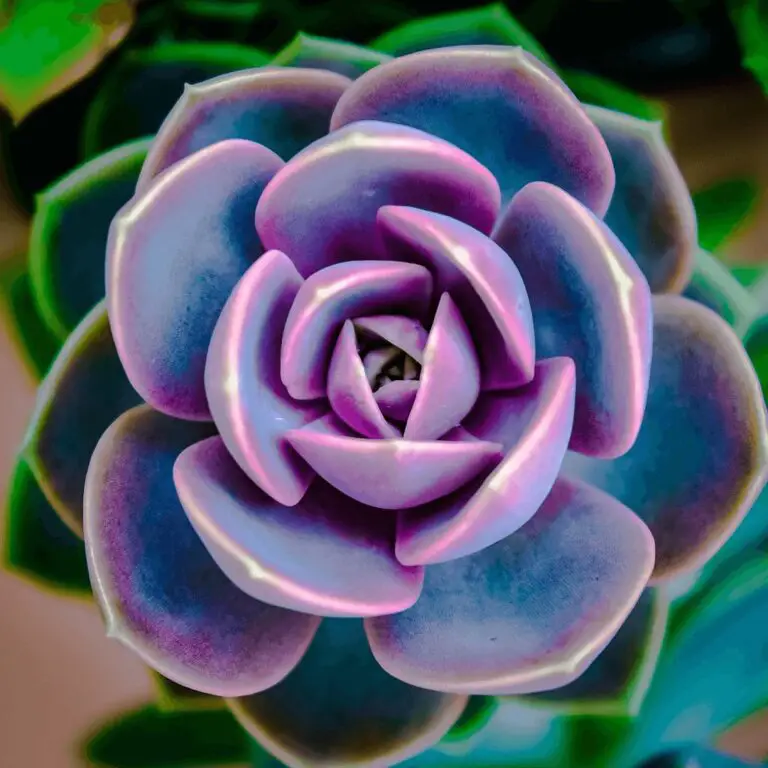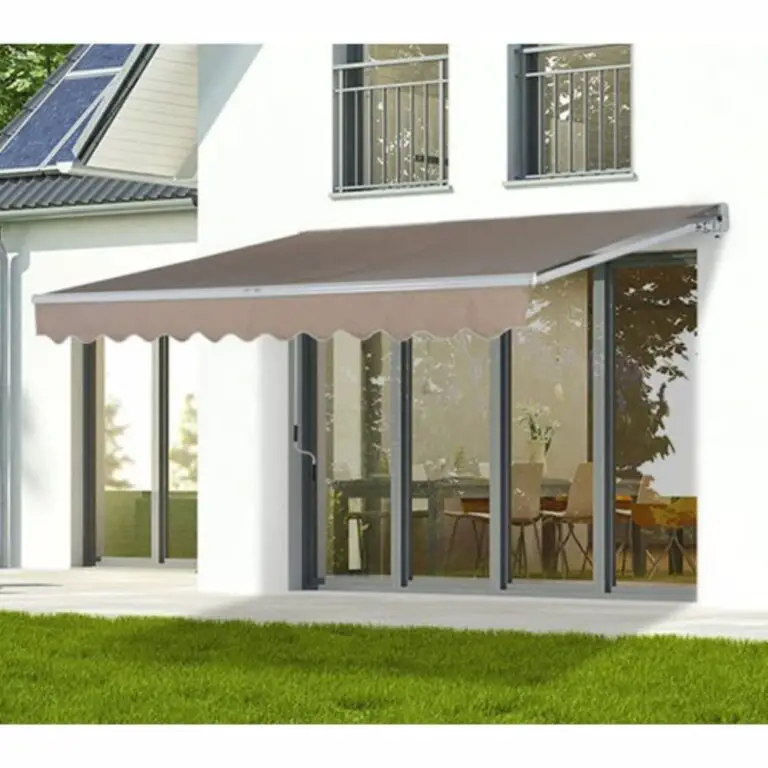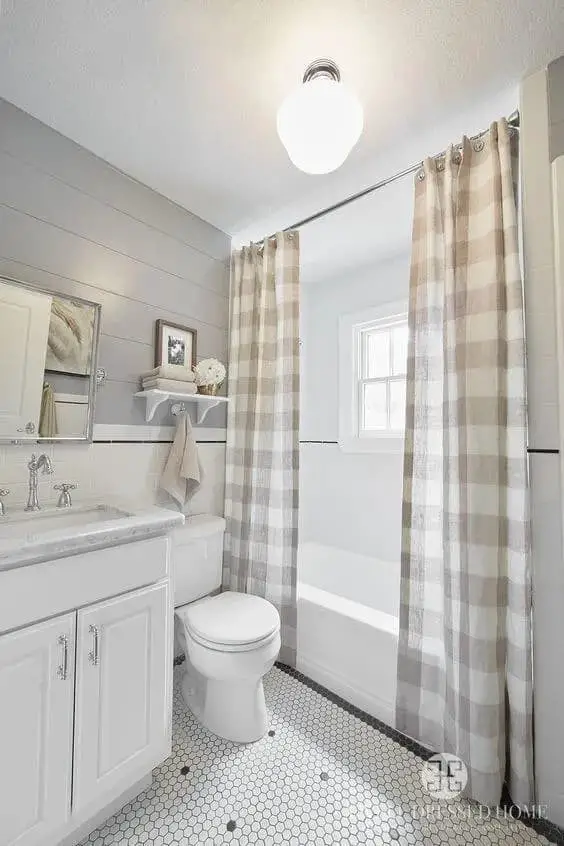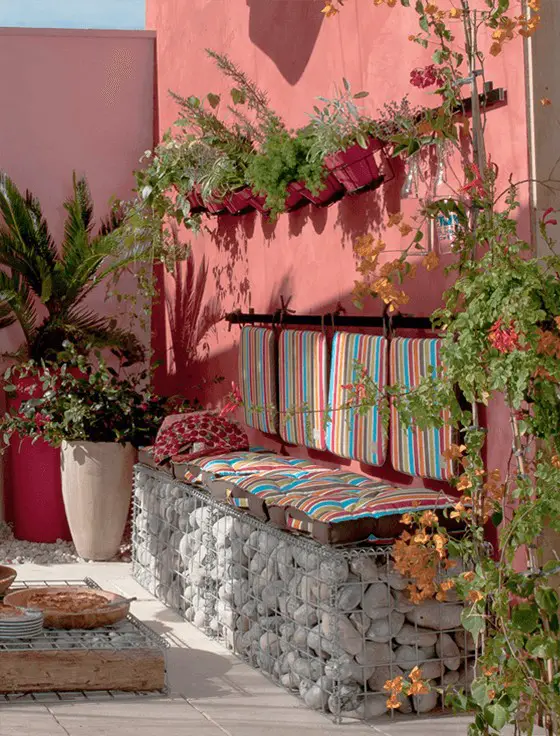15+ Innovative Grass Edging Ideas For A Perfect Lawn
While a freshly cut lawn can look great, there’s more to maintaining a well-manicured outdoor space than just mowing. One crucial aspect that’s often overlooked is grass edging. This essential detail not only enhances the visual appeal of your garden but also ensures those edges remain crisp and defined, preventing grass from encroaching on flower beds or sidewalks. By incorporating creative grass edging ideas, you can make life easier with reduced maintenance and a more defined garden space.
In this comprehensive guide, we’ll delve into 15 innovative grass edging solutions that cater to various tastes and preferences. From durable options like metal and stone to more natural choices like wood and bamboo, each type offers unique benefits in terms of aesthetics and practicality. Whether you’re looking for something low-maintenance or a statement piece, we’ve got the inside scoop on how to boost your garden’s curb appeal while streamlining maintenance.
So, let’s dive into the world of creative grass edging ideas and transform your outdoor space!
15 Stunning Grass Edging Ideas to Transform Your Yard
Brick Edging
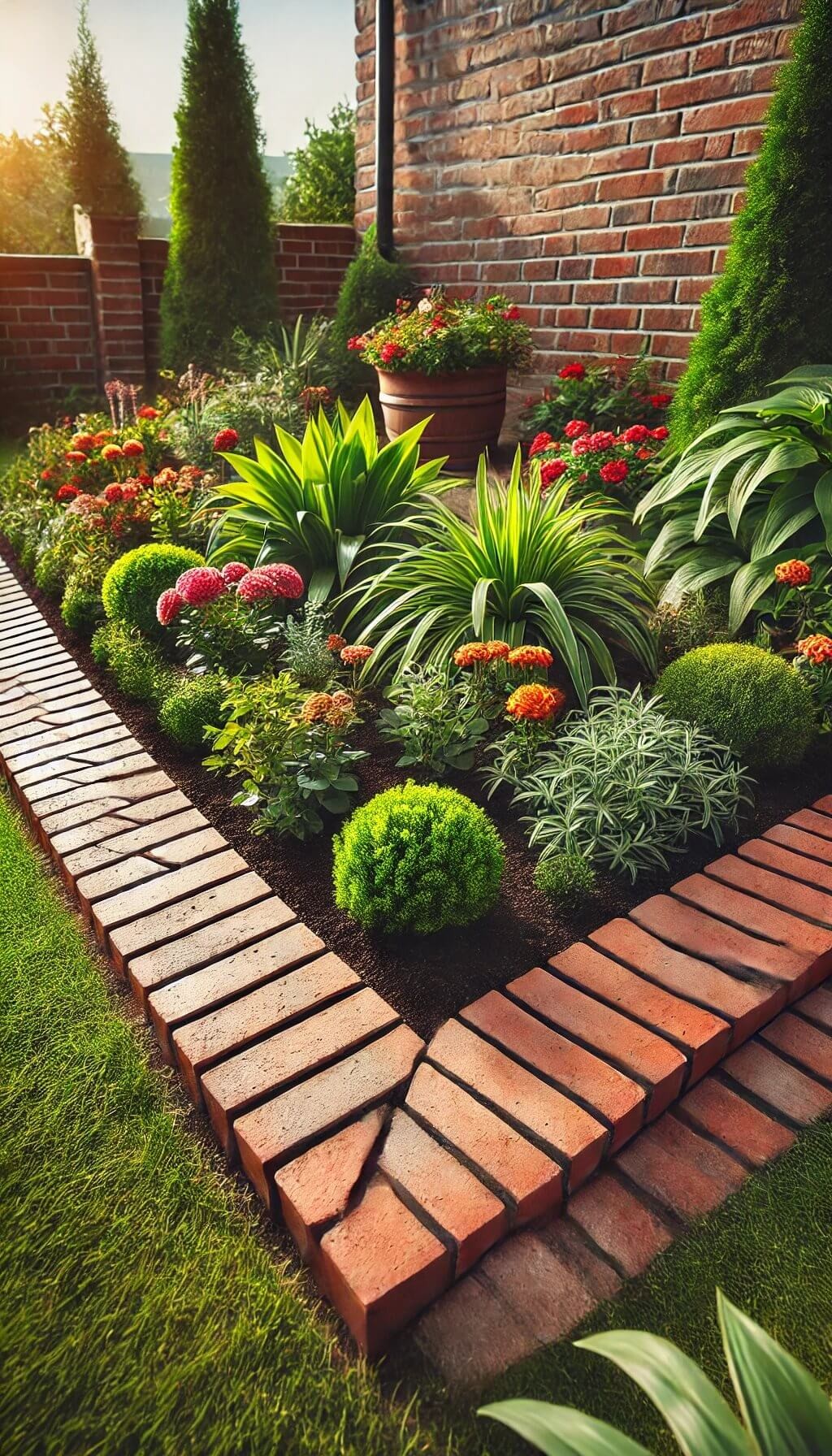
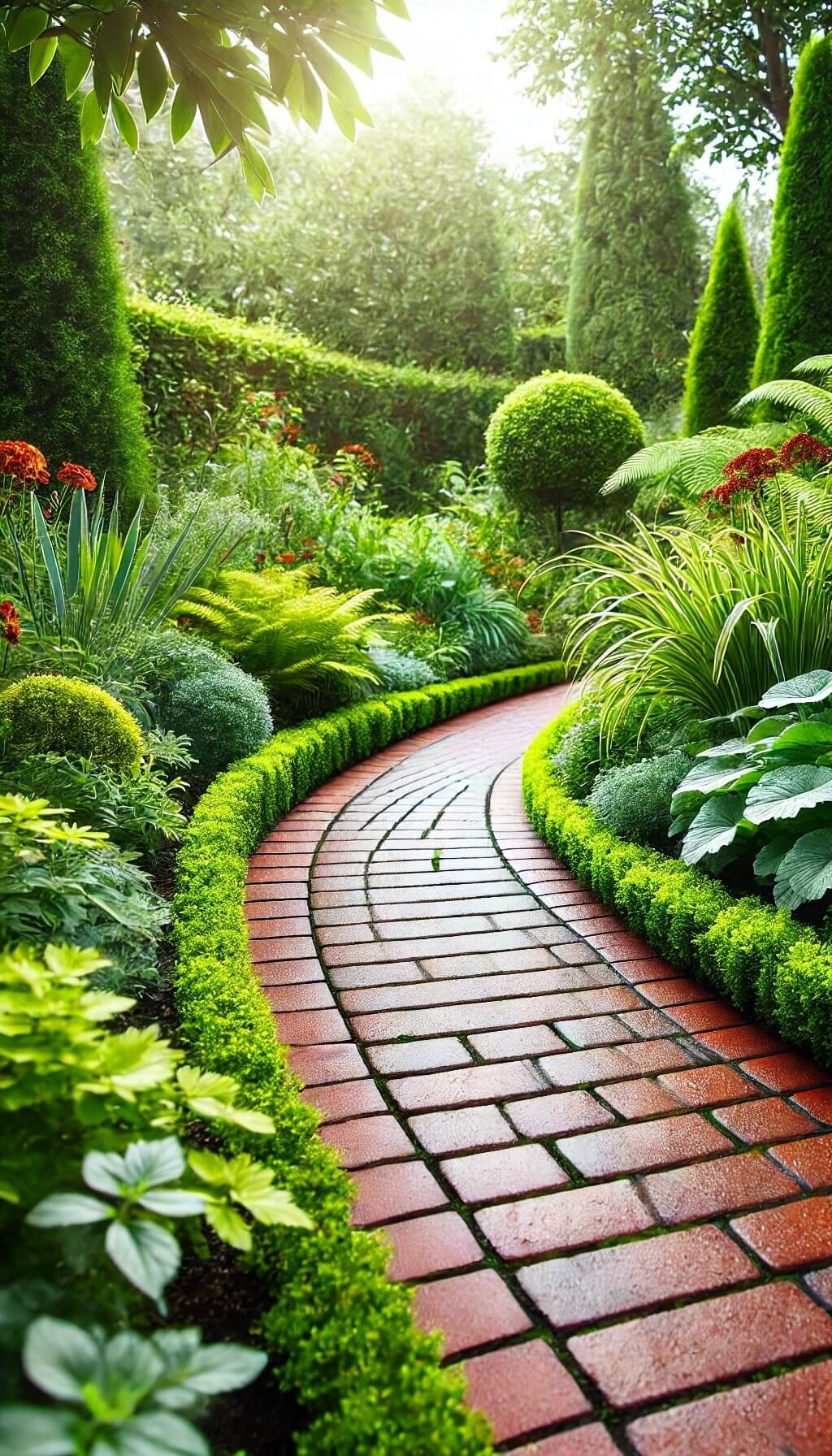
Brick edging is a classic choice for gardeners seeking a timeless touch in their yard. Its enduring appeal stems from its durability and the tidy, organized look it provides. While bricks can be a bit pricey and require some effort to set up correctly, the end result is well worth the investment. To get started, begin by digging a trench, laying your bricks in your desired pattern, and securing them with mortar or soil.
With a little elbow grease, you’ll be rewarded with stunning borders that truly stand out. For an eco-friendly twist, consider exploring the benefits of using recycled bricks, as renowned expert Martha Stewart has done.
Stone Edging
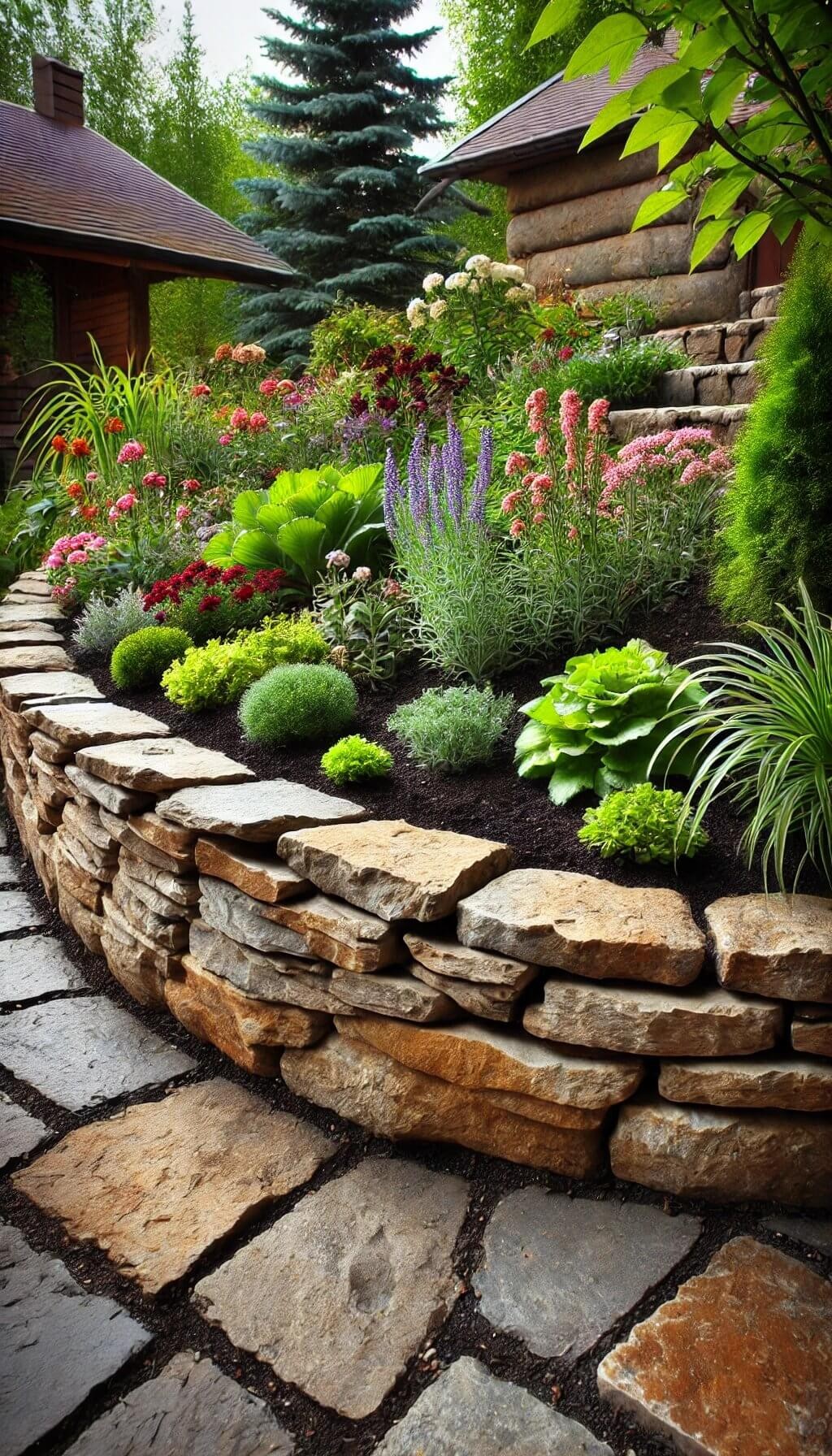
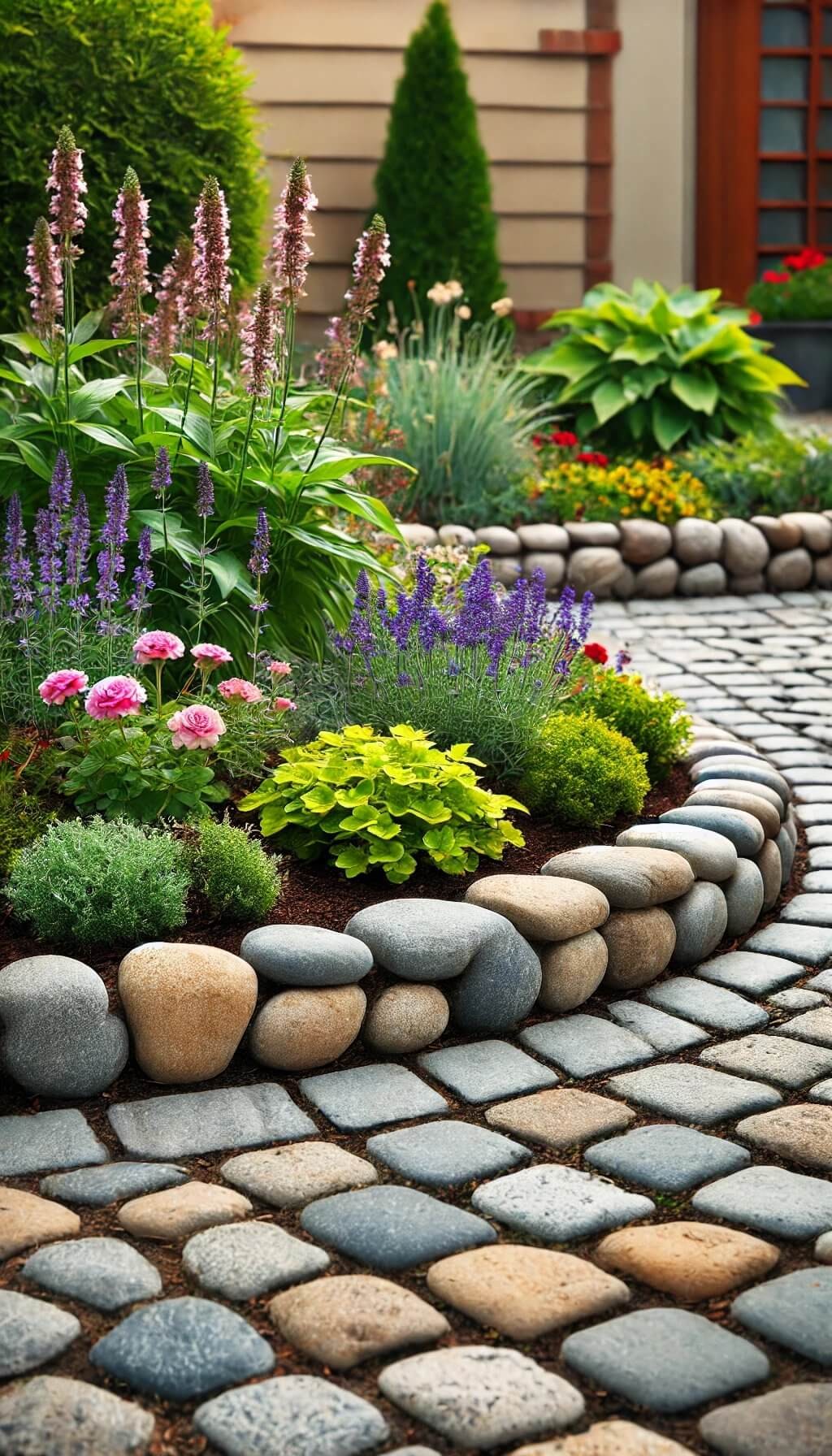
When it comes to stone edging, the possibilities are endless. Flagstone, cobblestone, and river rock are just a few of the many options available. Ultimately, the right stone choice hinges on finding one that harmonizes with the overall aesthetic of your garden. Installation is relatively simple: lay down the stones along the garden boundary and secure them in place. Stone brings a sturdy and organic feel to your edges, seamlessly integrating with most garden styles.
Its free-form nature allows for creative, attention-grabbing designs that can really make your outdoor space stand out.
Metal Edging

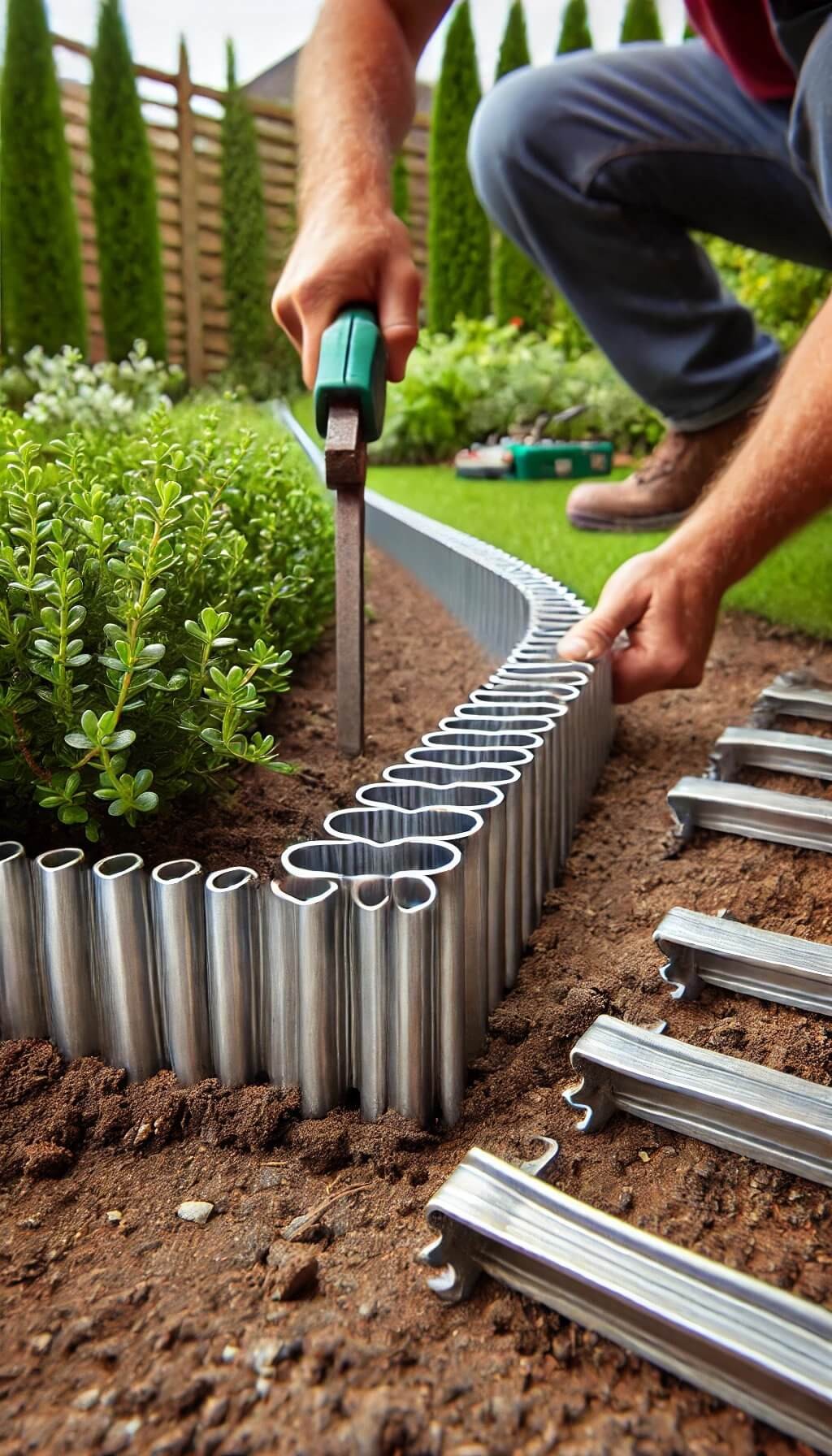
Metal edging, particularly varieties made of steel or aluminum, can bring a modern and sleek touch to any garden. Its durability is one of its greatest advantages, as it will not bend or warp with time, making it an excellent choice for those seeking a long-lasting solution. Installation is also relatively straightforward, requiring only the interlocking of strips followed by hammering them into place.
This type of edging works particularly well in contemporary garden designs, where its clean and minimalist aesthetic can be fully appreciated. Additionally, metal edging proves to be quite resilient against the elements, making it an excellent option for gardens that may be exposed to harsh weather conditions.
Plastic Edging
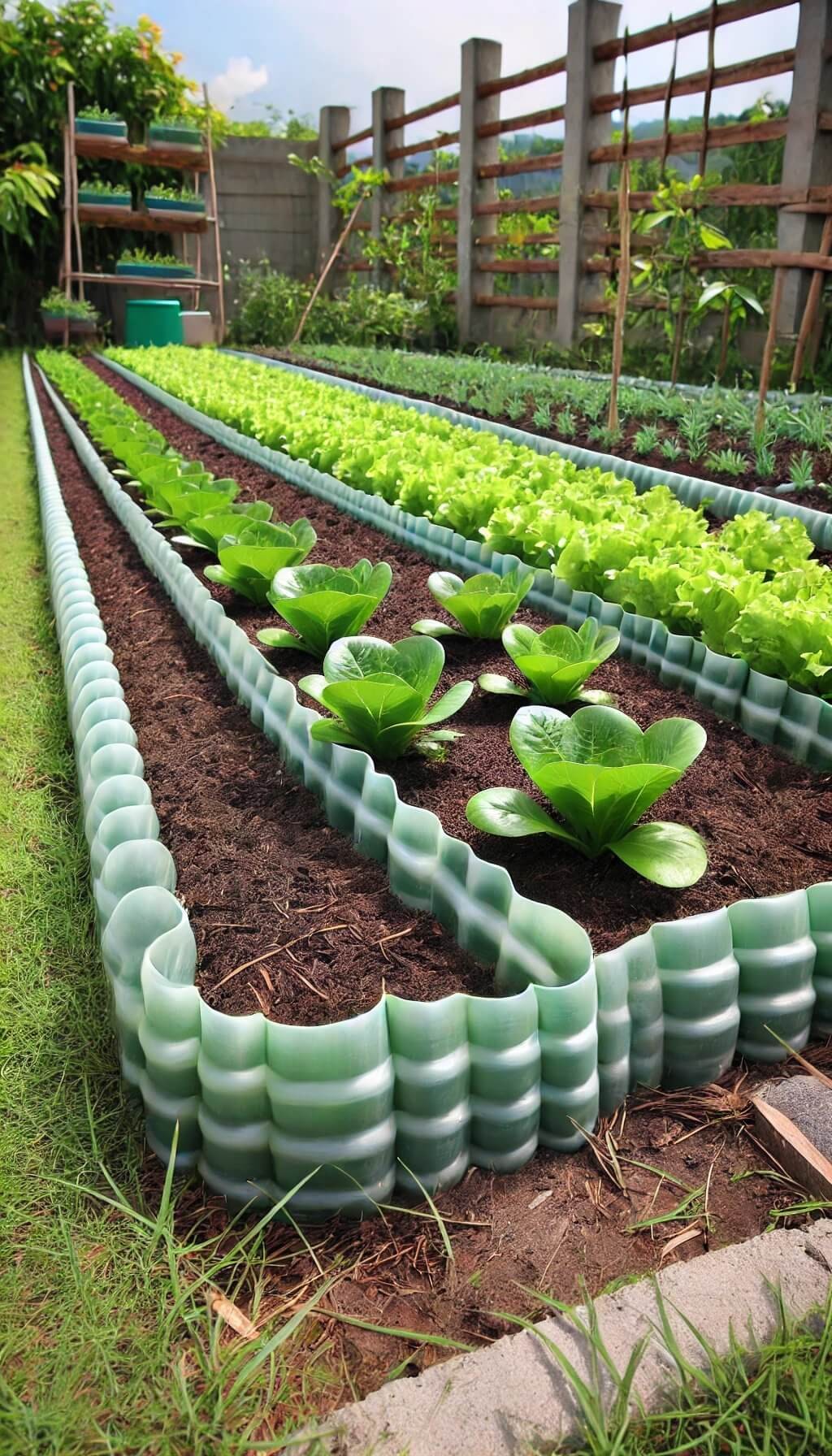
For budget-minded garden enthusiasts who still want to maintain a well-manicured outdoor space, plastic edging is an attractive option. Its affordability and durability make it a practical choice, withstanding wear and tear without requiring excessive maintenance. Installation is also relatively effortless – simply snap the pieces together and push them into the ground. The flexible nature of this material makes it particularly suitable for curvy garden paths or rounded flower beds.
While plastic may not offer the same natural aesthetic as wood or stone, its ease of use and functionality have earned it a spot in many gardeners’ toolkits.
Wood Edging
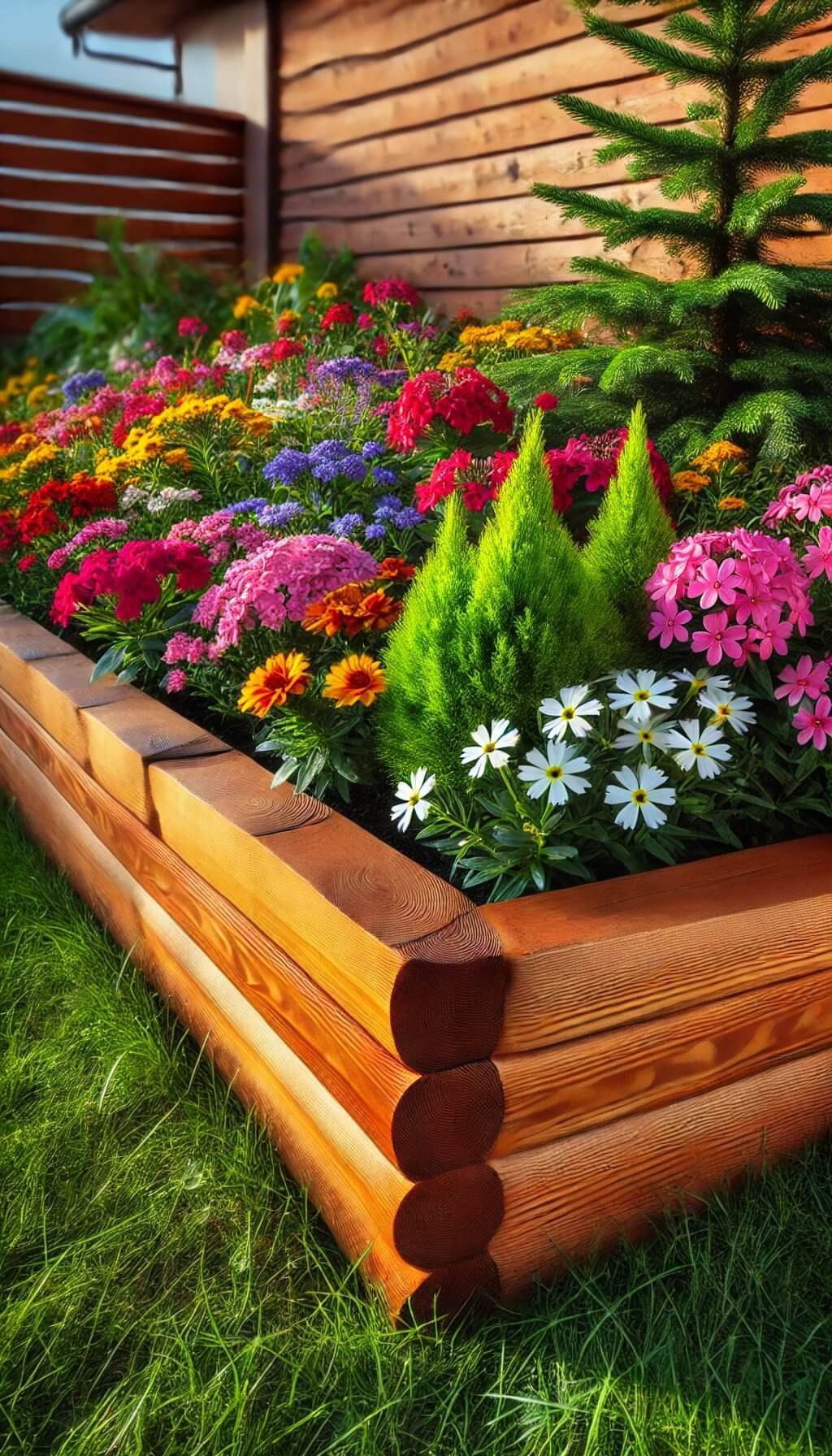
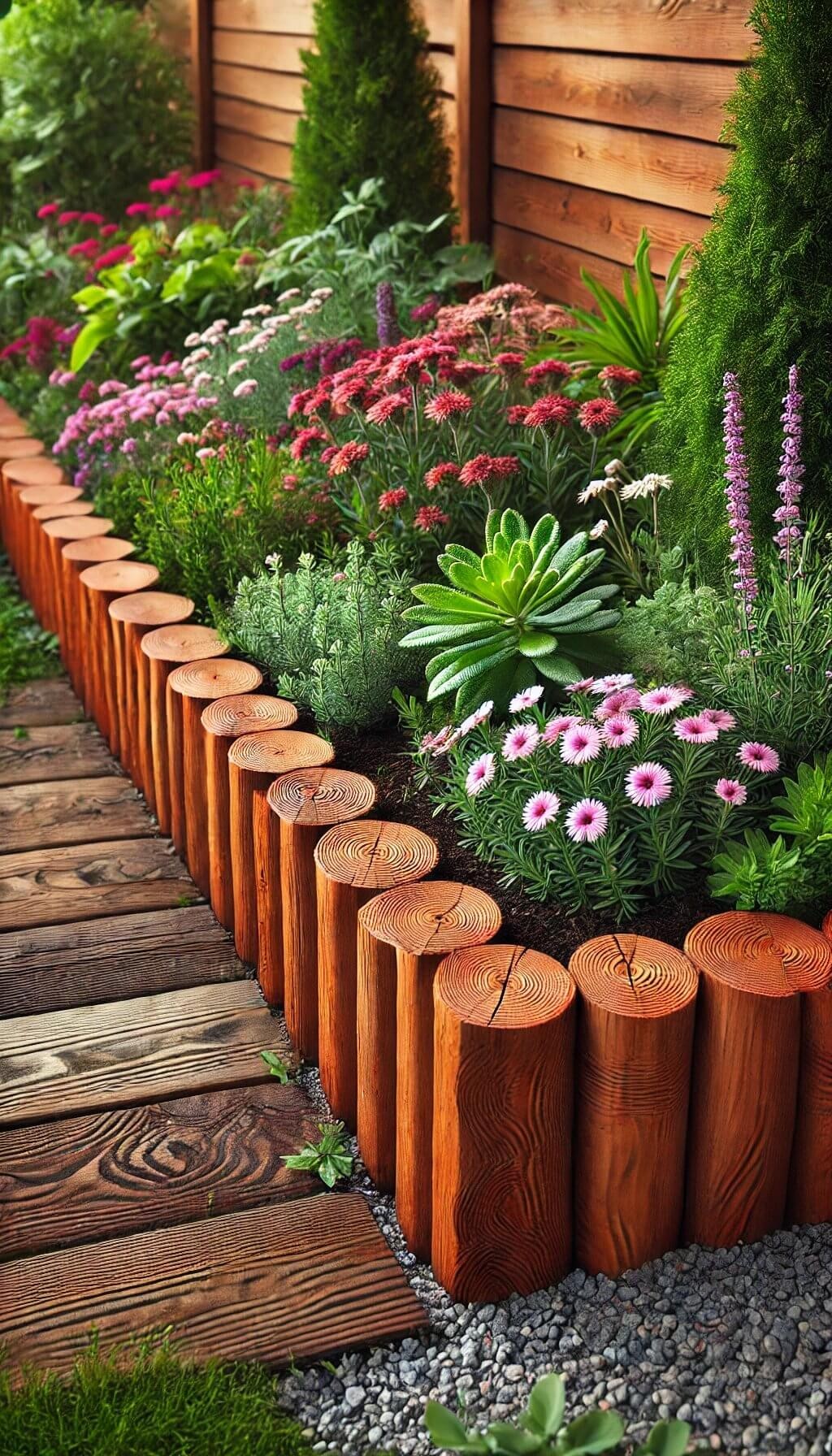
Wood edging is all about embracing a natural ambiance in your garden. It’s an excellent choice if you want to create a seamless transition between your outdoor space and the surrounding environment. The top picks for wood edging include cedar, redwood, and pressure-treated lumber, which offer robust protection against rot and pests.
When it comes to installation, simply measure your space, cut the wood to fit, and secure it with stakes.
To maintain its appearance, a bit of upkeep with stains or sealers is necessary. What’s particularly appealing about wood edging is how it harmoniously blends with flowers and shrubs, resulting in a tidy and intentional-looking garden.
Bob Vila even chimes in on the eco-friendly benefits of this choice, making it an attractive option for those seeking a sustainable solution.
Concrete Edging
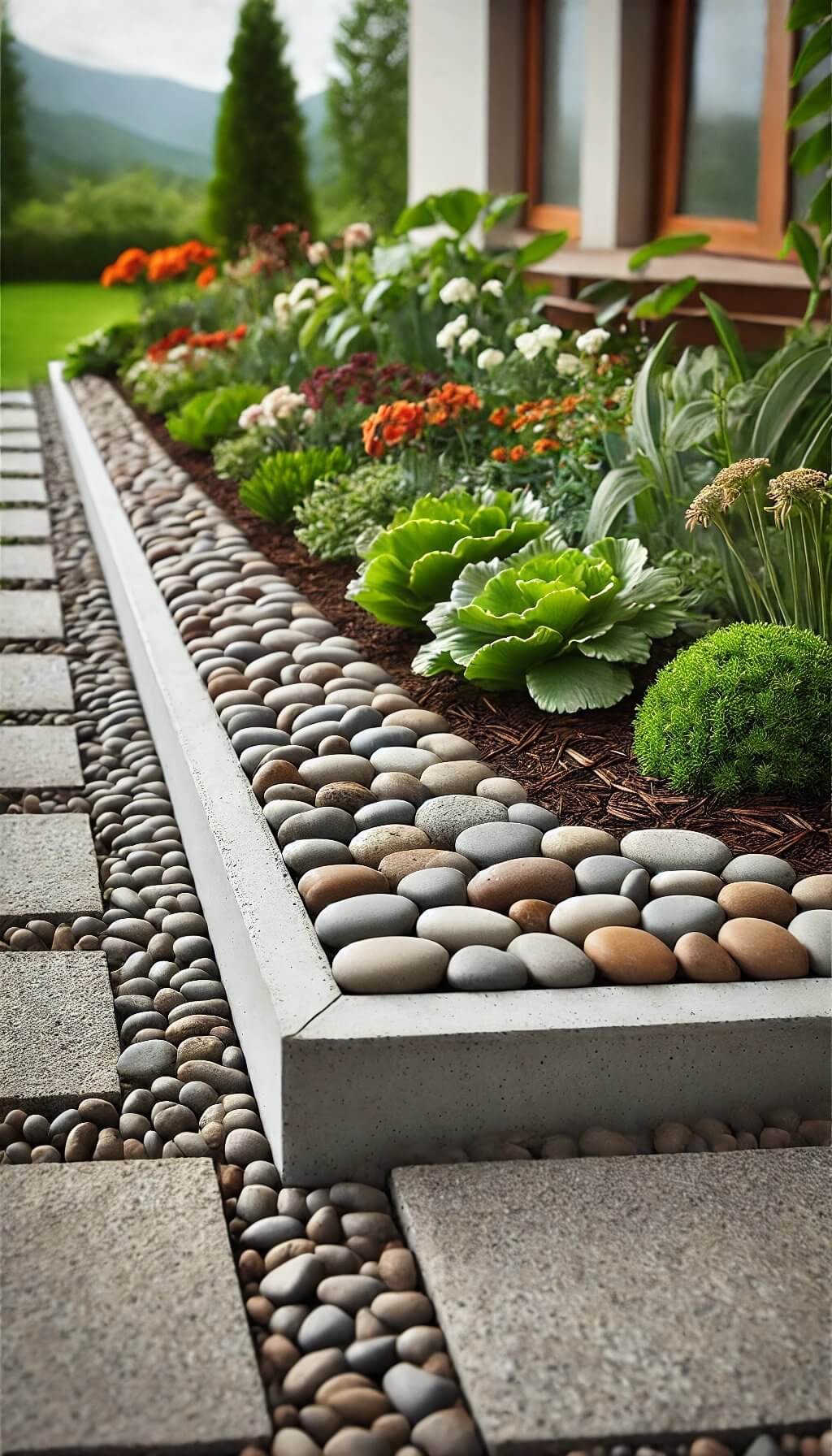

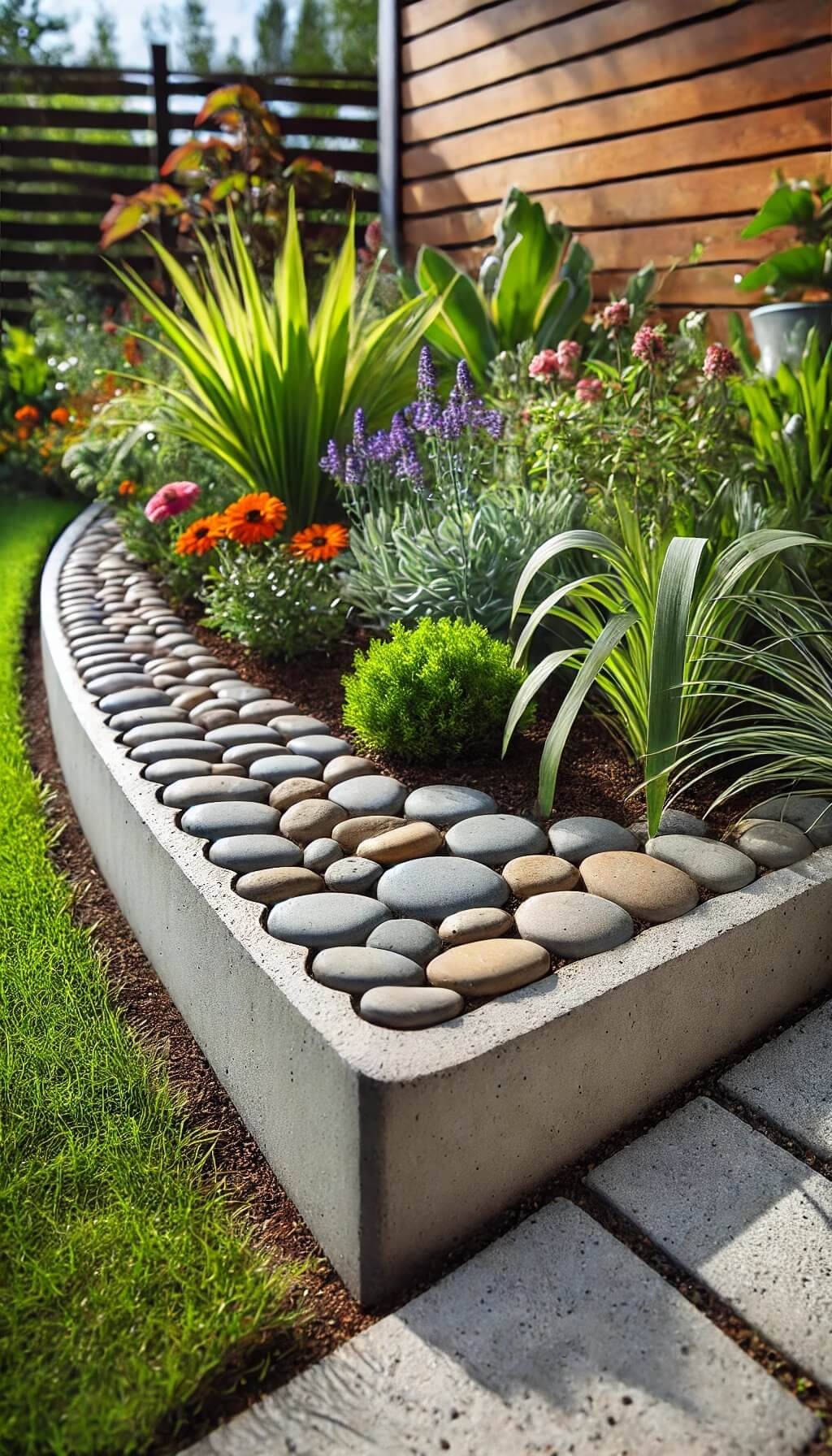
Concrete edging offers a robust framework for defining boundaries in your garden. Whether you opt for fresh pouring or pre-made blocks, this material is renowned for its tenacity. While it may require some effort to shape and mold into place, the end result is well worth the investment. Concrete’s durability allows it to effectively contain soil and maintain crisp edges, making it an excellent choice for garden design.
Furthermore, its versatility enables you to add a touch of flair by incorporating patterns or pebbles, transforming what might initially seem like a straightforward solution into a visually appealing feature.
Rubber Edging
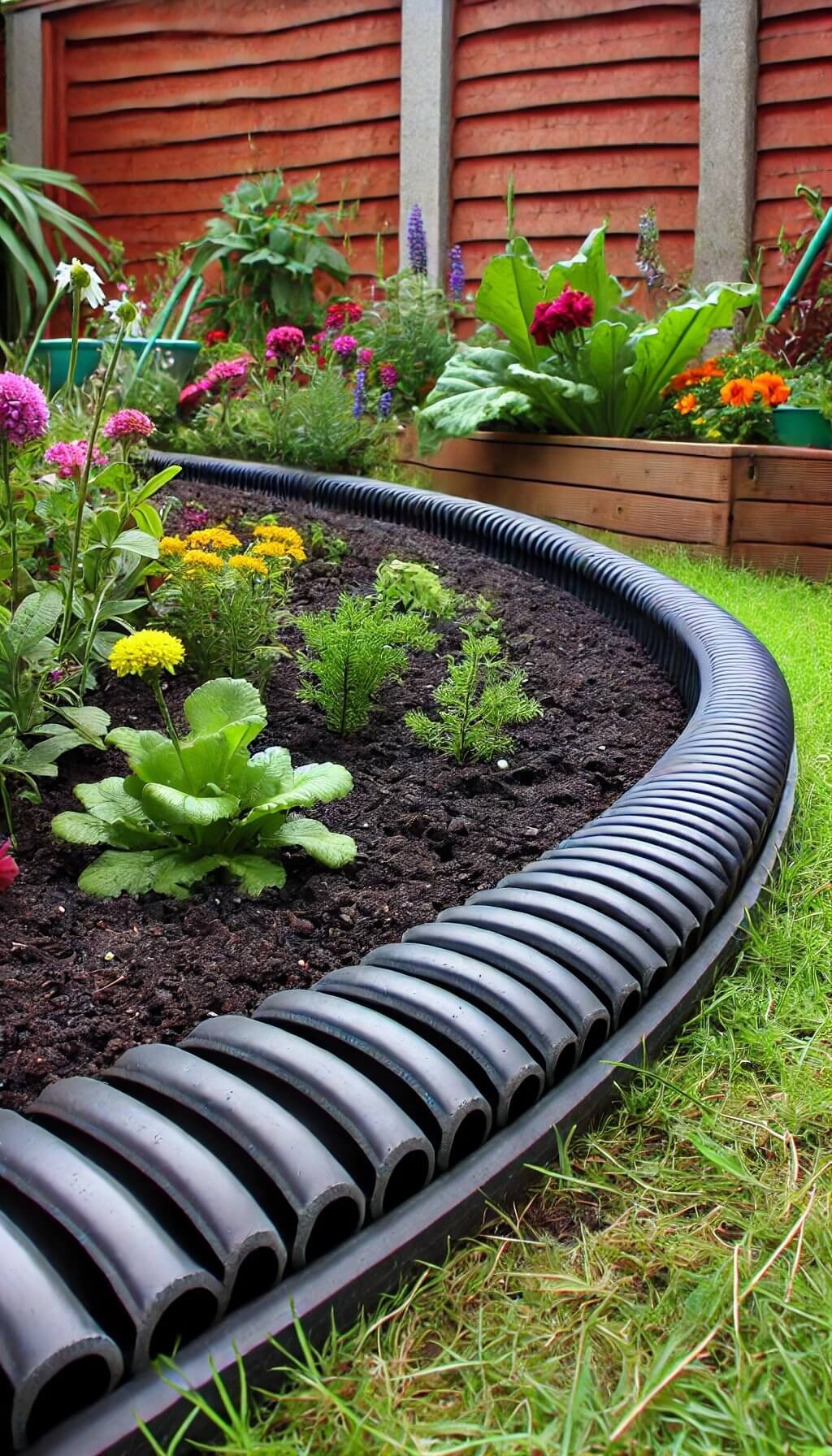
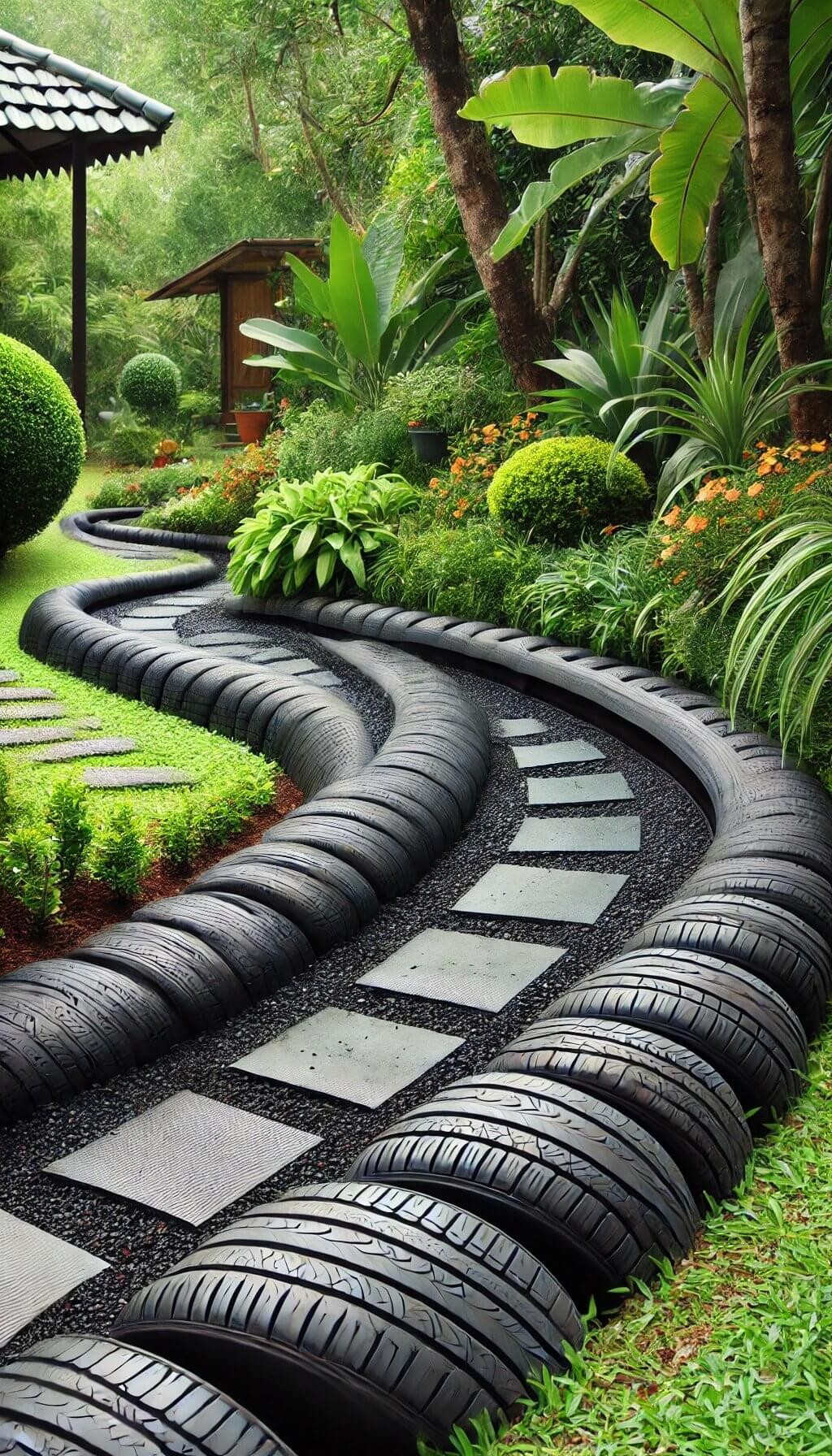
Kudos to sustainability, which gets a shout-out through rubber edging – a fantastic eco-friendly solution for your garden! This innovative product is made from recycled materials, such as old tires, giving you a guilt-free way to beautify your outdoor space while doing the environment a favor. The flexible nature of rubber makes it easy to curve around your garden beds, and its staying power ensures it remains in place, regardless of rain or shine.
Plus, installation is a breeze – simply lay it down, secure it with stakes, and you’re done! Not only that, but this durable material can withstand mower bumps and harsh weather conditions without losing its charm. Check out how effortlessly it can elevate the look of any garden without requiring too much effort!
Garden Logs
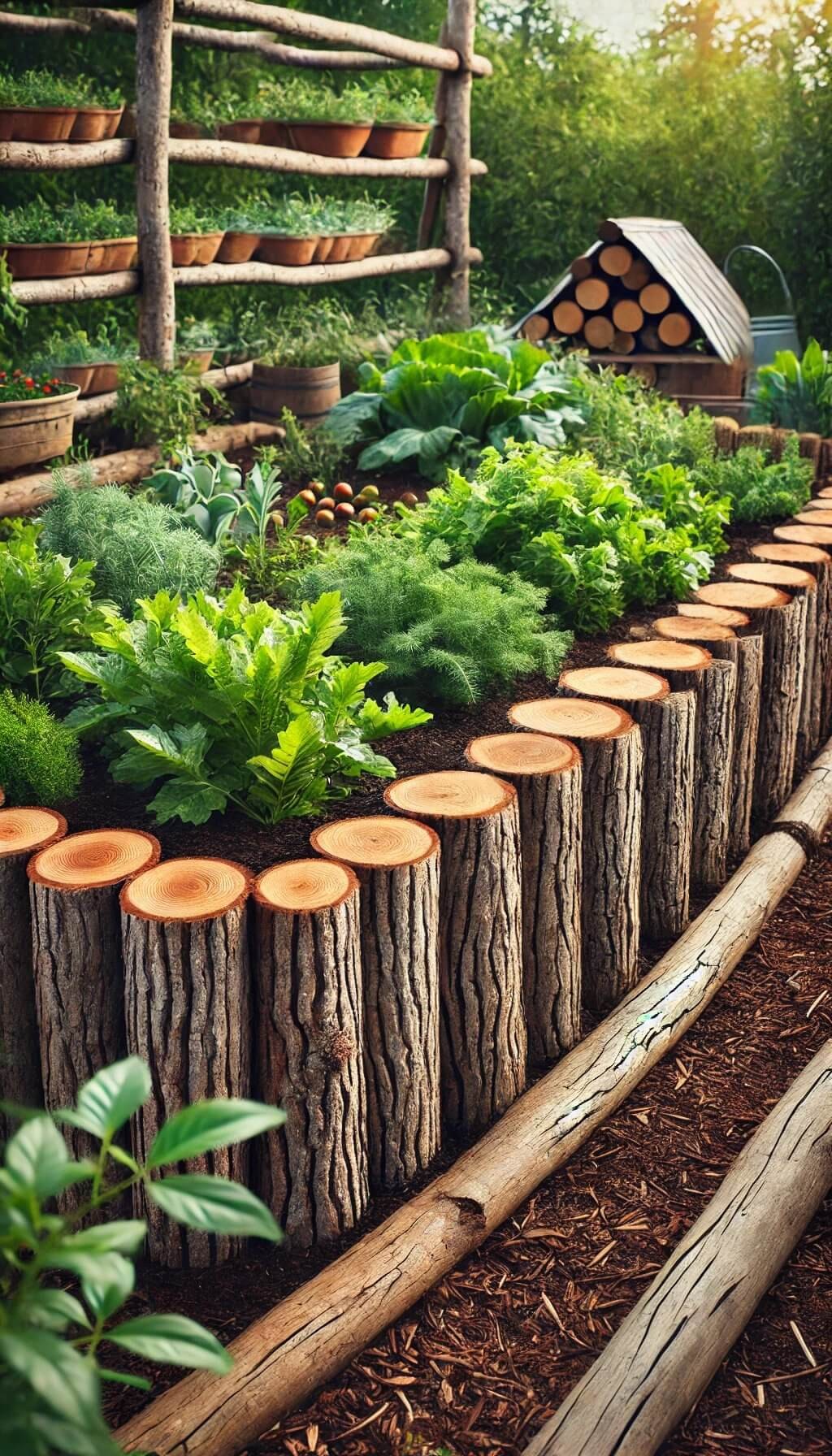
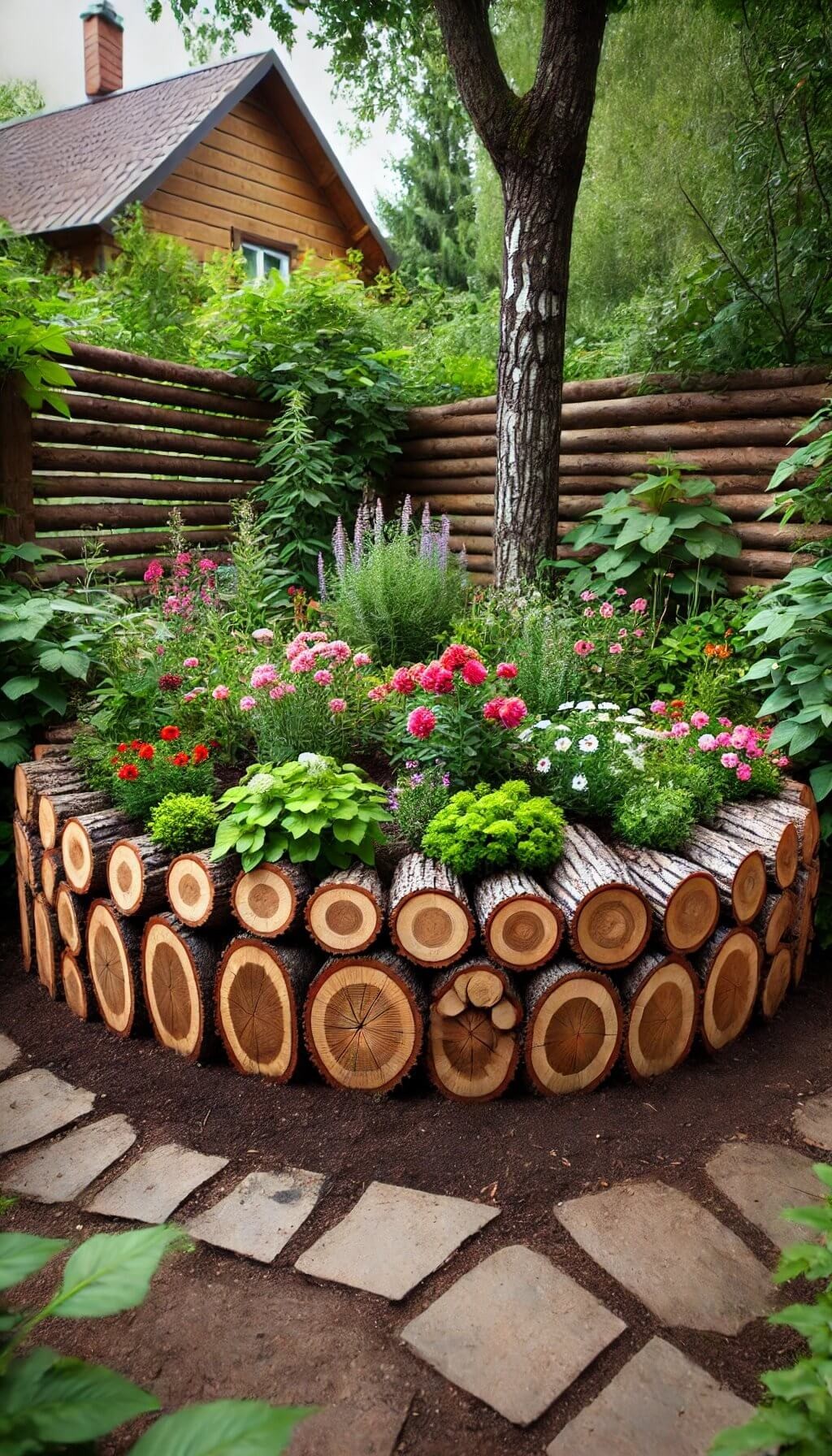
Infuse your garden with the rustic charm of nature by incorporating sturdy logs into your design. If you’re an outdoor enthusiast, this is the perfect opportunity to get creative. Start by sourcing high-quality logs – consider visiting a local sawmill or repurposing fallen trees in your area. Once you have them, simply lay them out, partially burying them in the soil for added stability. This natural touch can help frame a vegetable garden or add a charming border to a flower bed.
By bringing a piece of the forest into your backyard, logs will give your outdoor space a cozy and grounded feel.
Bamboo Edging
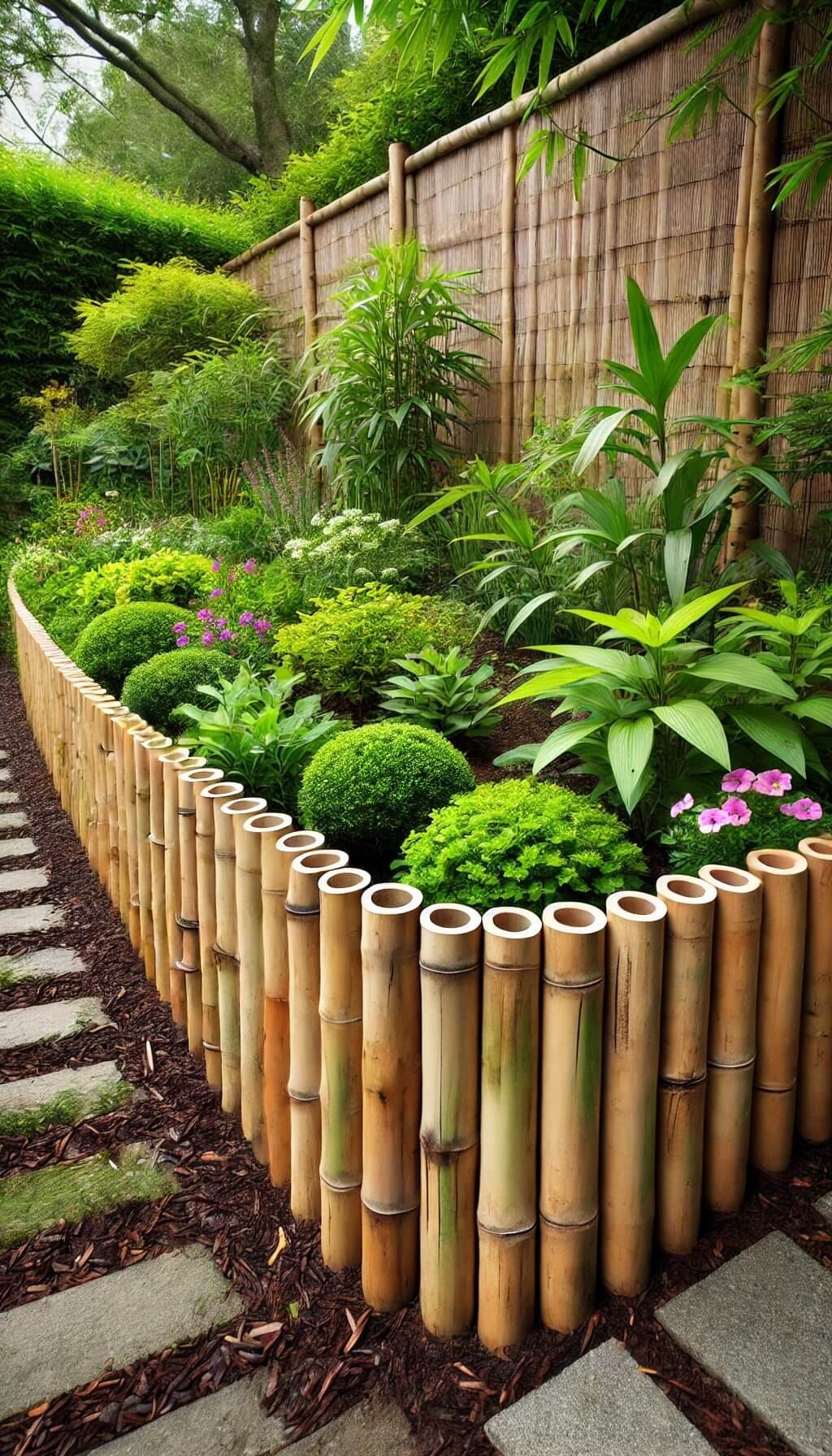
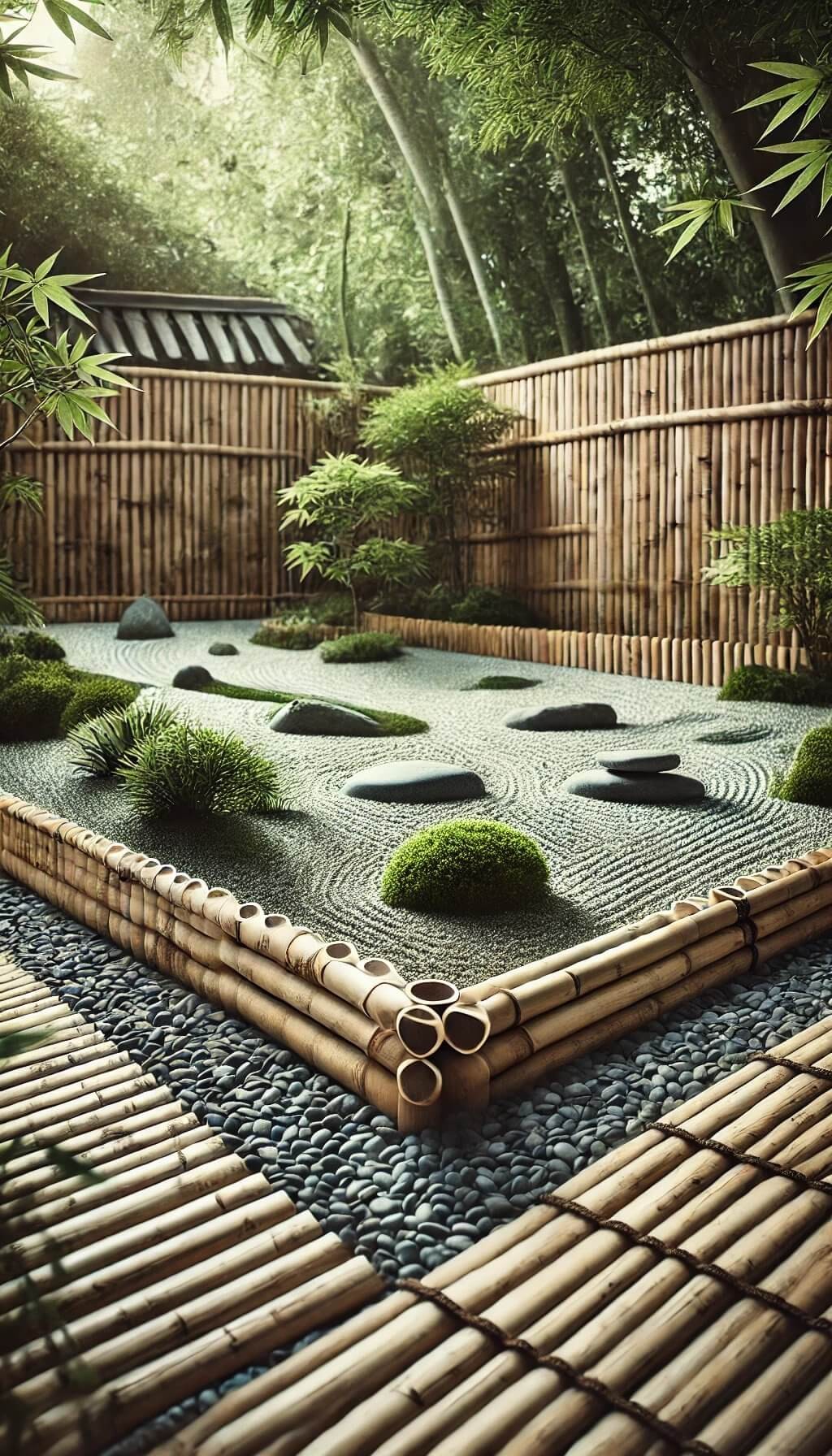
Elevate your garden’s aesthetic with sustainable bamboo edging that effortlessly brings the outdoors in. The installation process is straightforward: simply create a shallow trench, place the bamboo poles, and secure them using soil or sand. To maintain their sleek appearance, occasional oiling and splinter checks will suffice. As durable as it is stylish, this eco-friendly option is perfect for gardens seeking an environmentally responsible touch.
In fact, even renowned lifestyle expert Martha Stewart has praised bamboo’s versatility in garden design, making it a popular choice for those looking to incorporate natural elements into their outdoor space.
Glass Bottle Edging
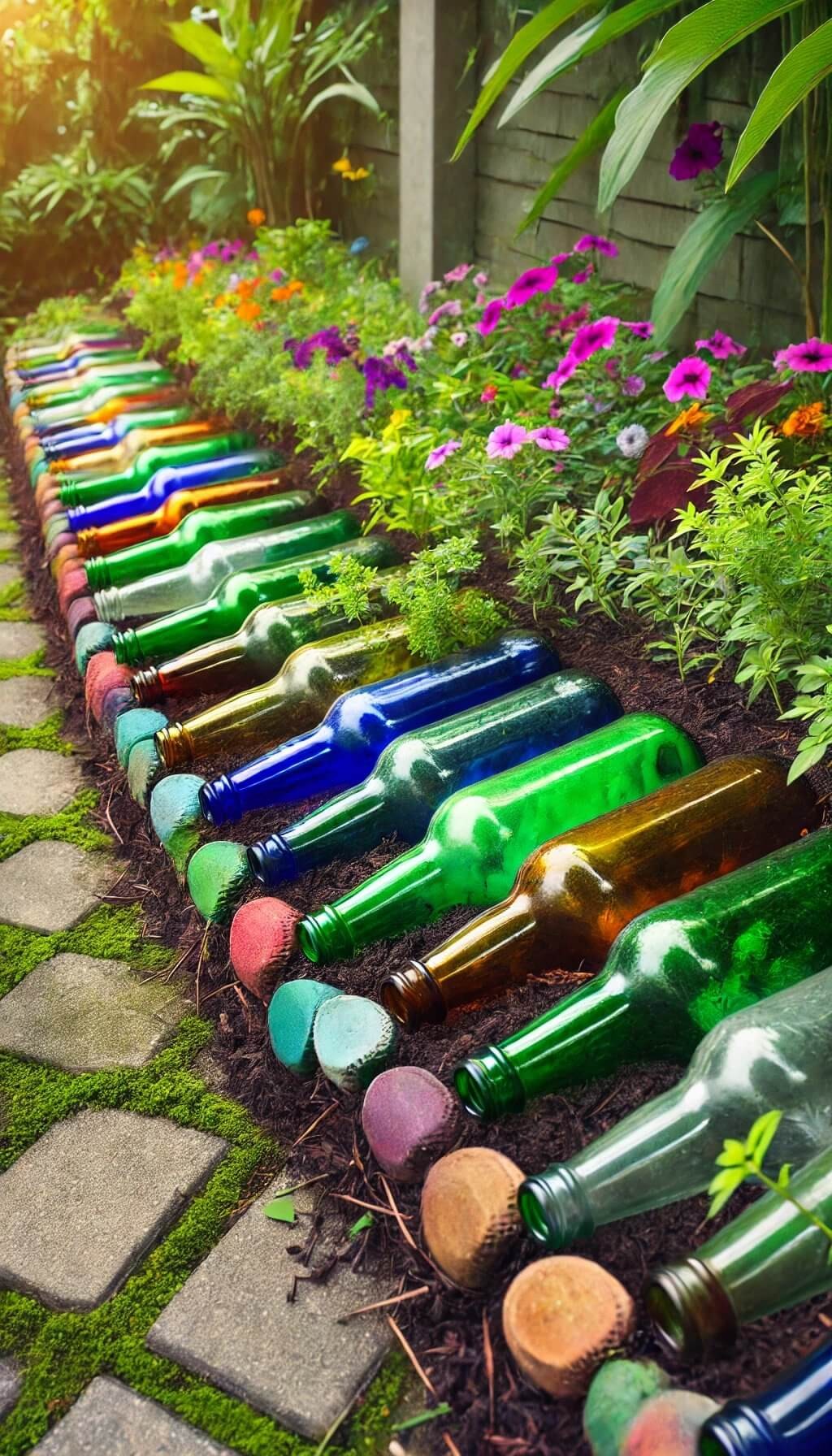
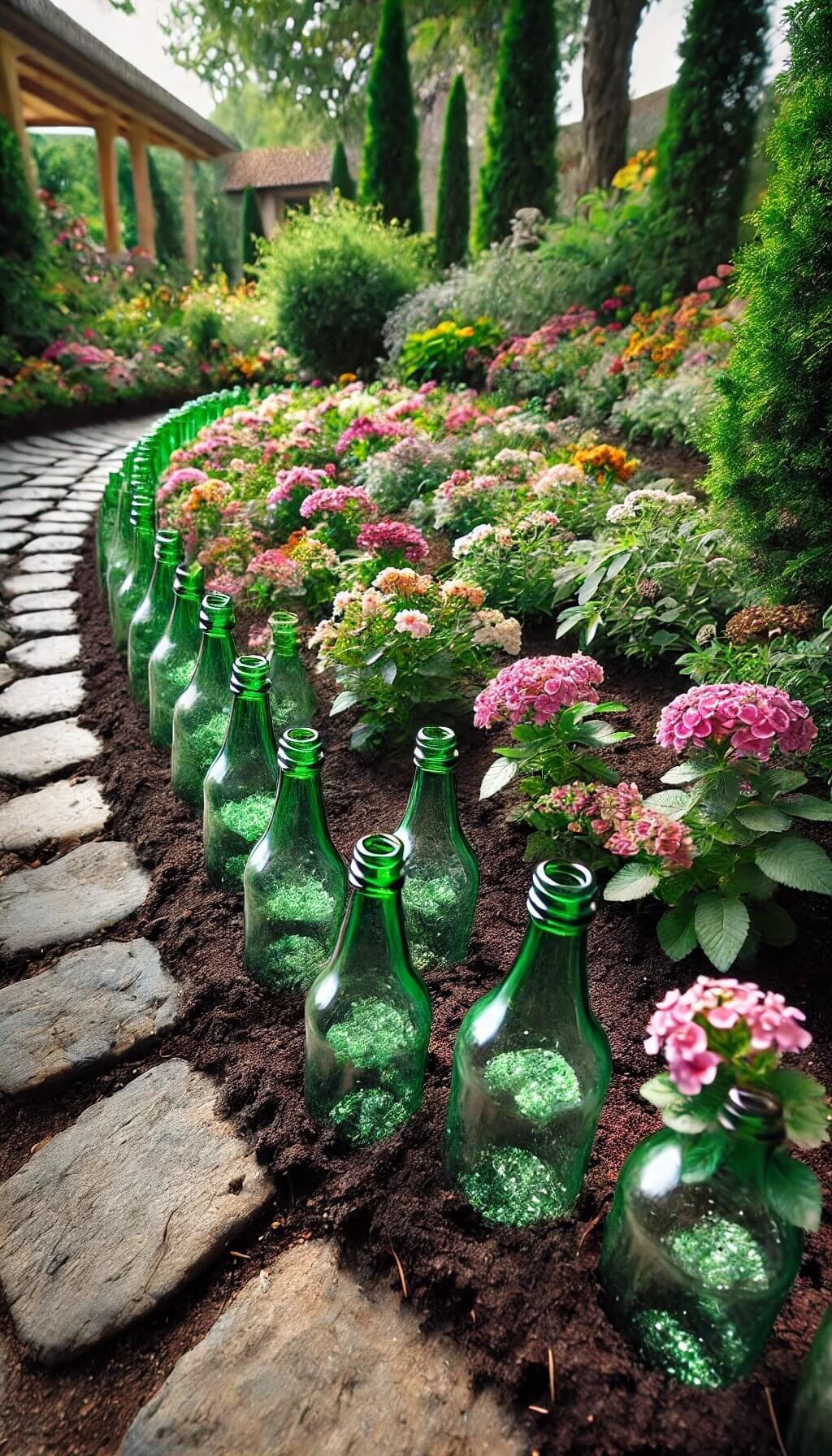
Transform your garden with an unconventional yet captivating edge: a sparkling glass bottle border! This creative upcycling idea not only breathes new life into discarded containers but also injects a touch of whimsy and light into your outdoor space. By aligning the bottles’ necks in the soil, you’ll create a striking visual display that seems to come alive as the sun catches its facets.
Just remember to prioritize caution when handling glass by donning gloves and keeping it clean with occasional wipe-downs. The result is an eclectic yet charming addition that brings a splash of color and playfulness to any garden setting.
Landscape Timbers
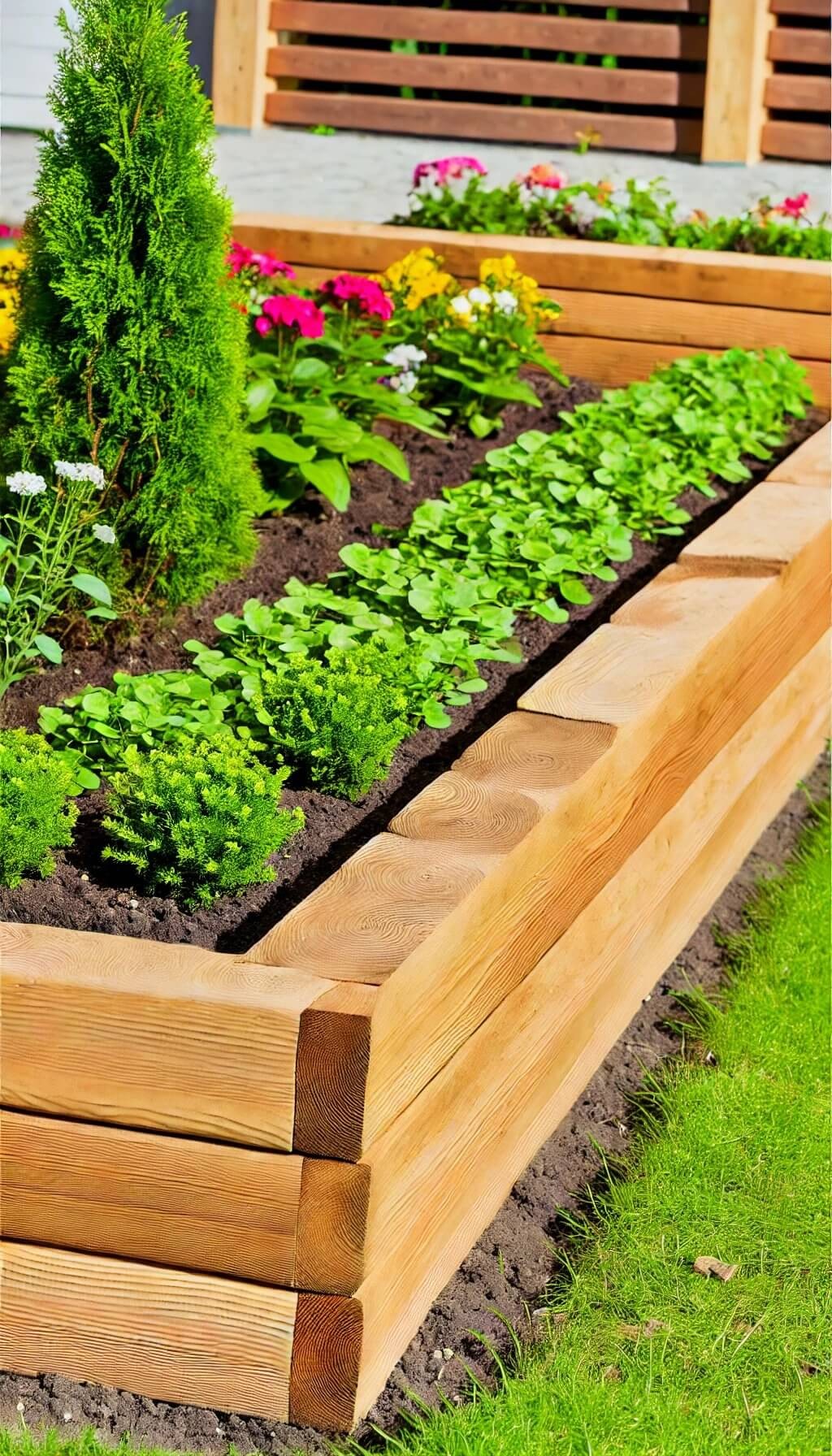
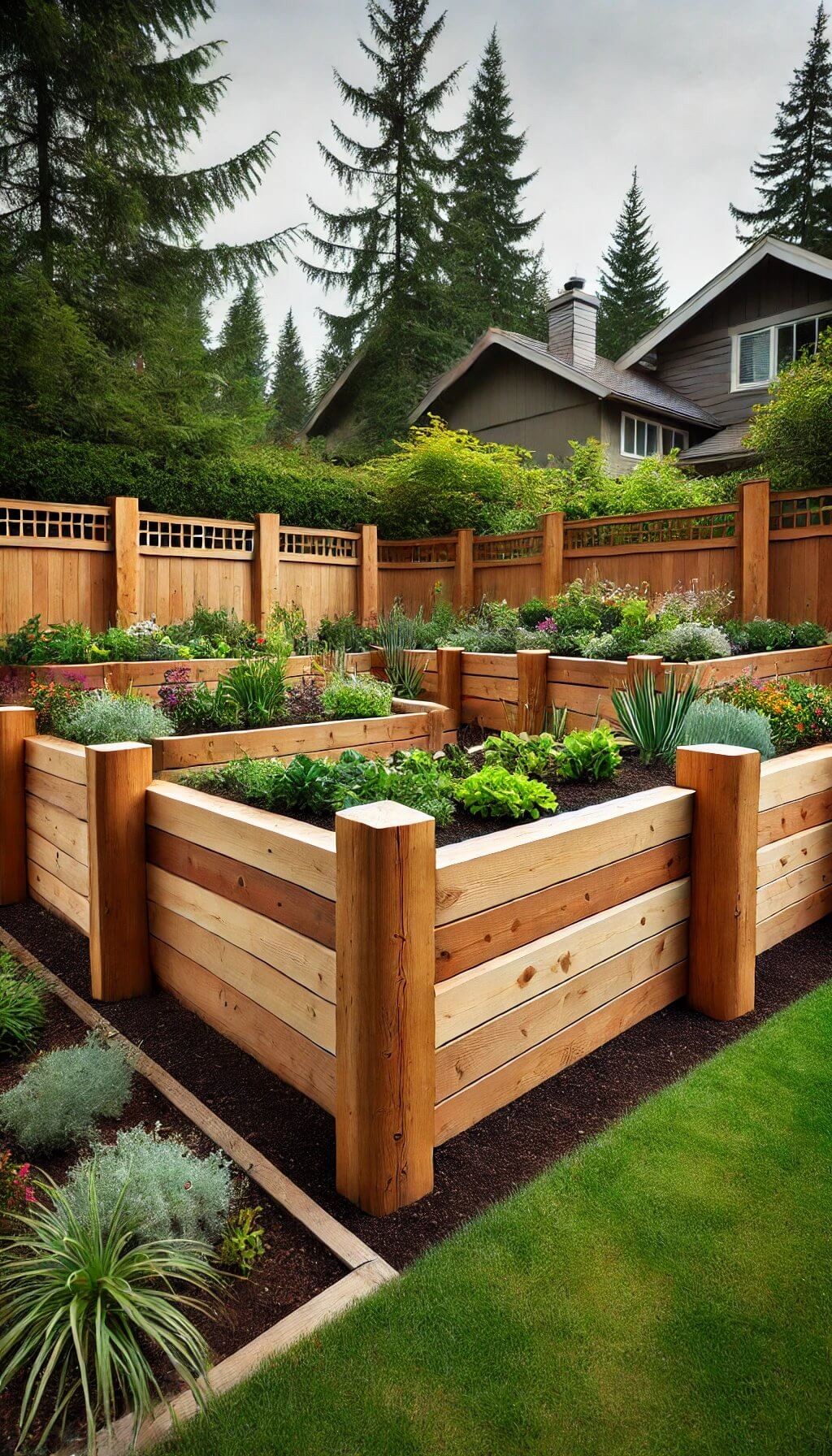
Landscape timbers bring a robust and versatile edge to any outdoor space. Perfect for framing larger garden beds or building raised planters, these durable pieces of wood are surprisingly easy to install. Simply lay them down, drill them together, and secure them with stakes – no experience necessary! With their bold appearance, landscape timbers can add a structured feel to your garden, making it the perfect choice for those looking to make a statement with their outdoor space.
Wattle Edging
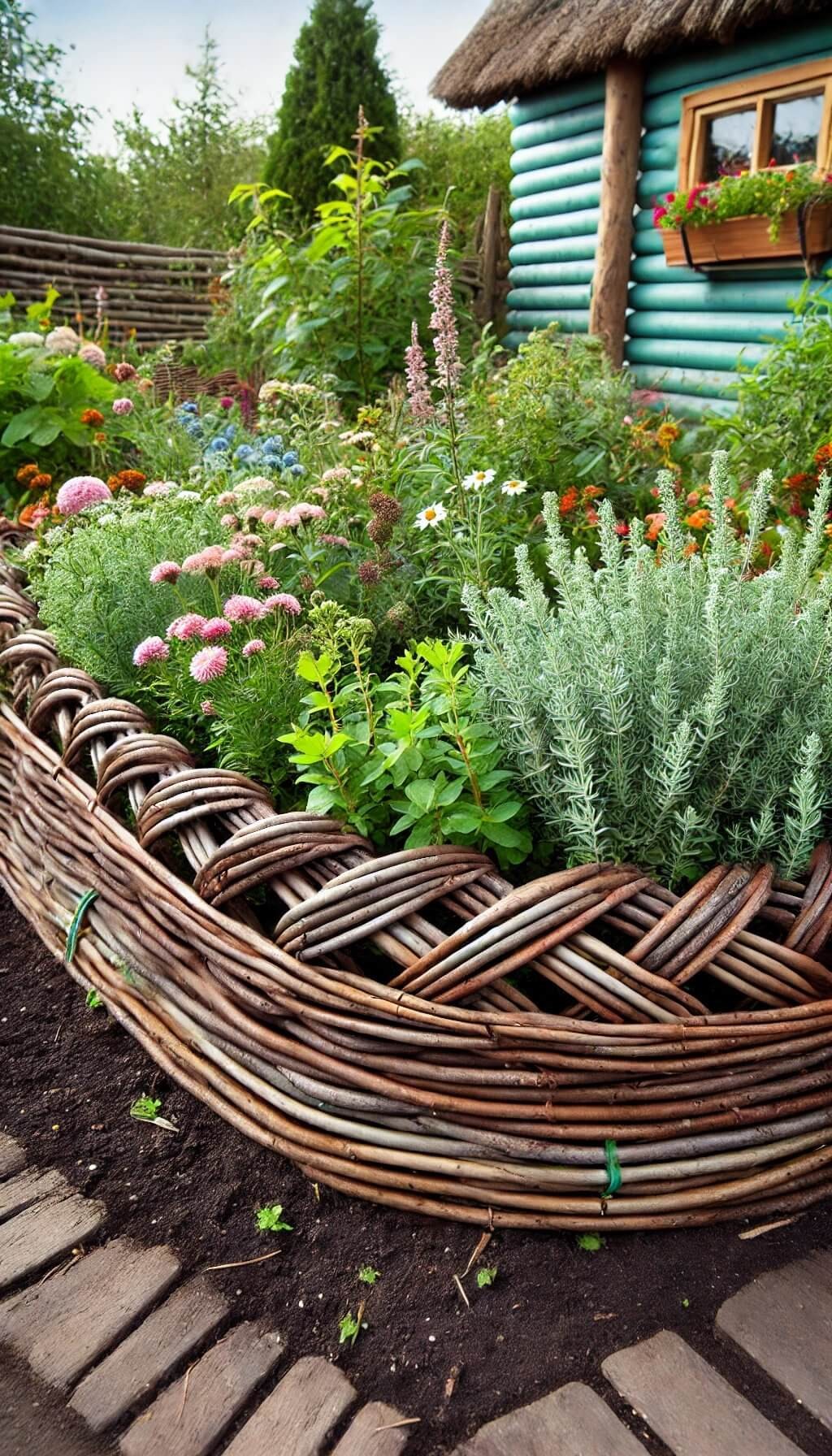
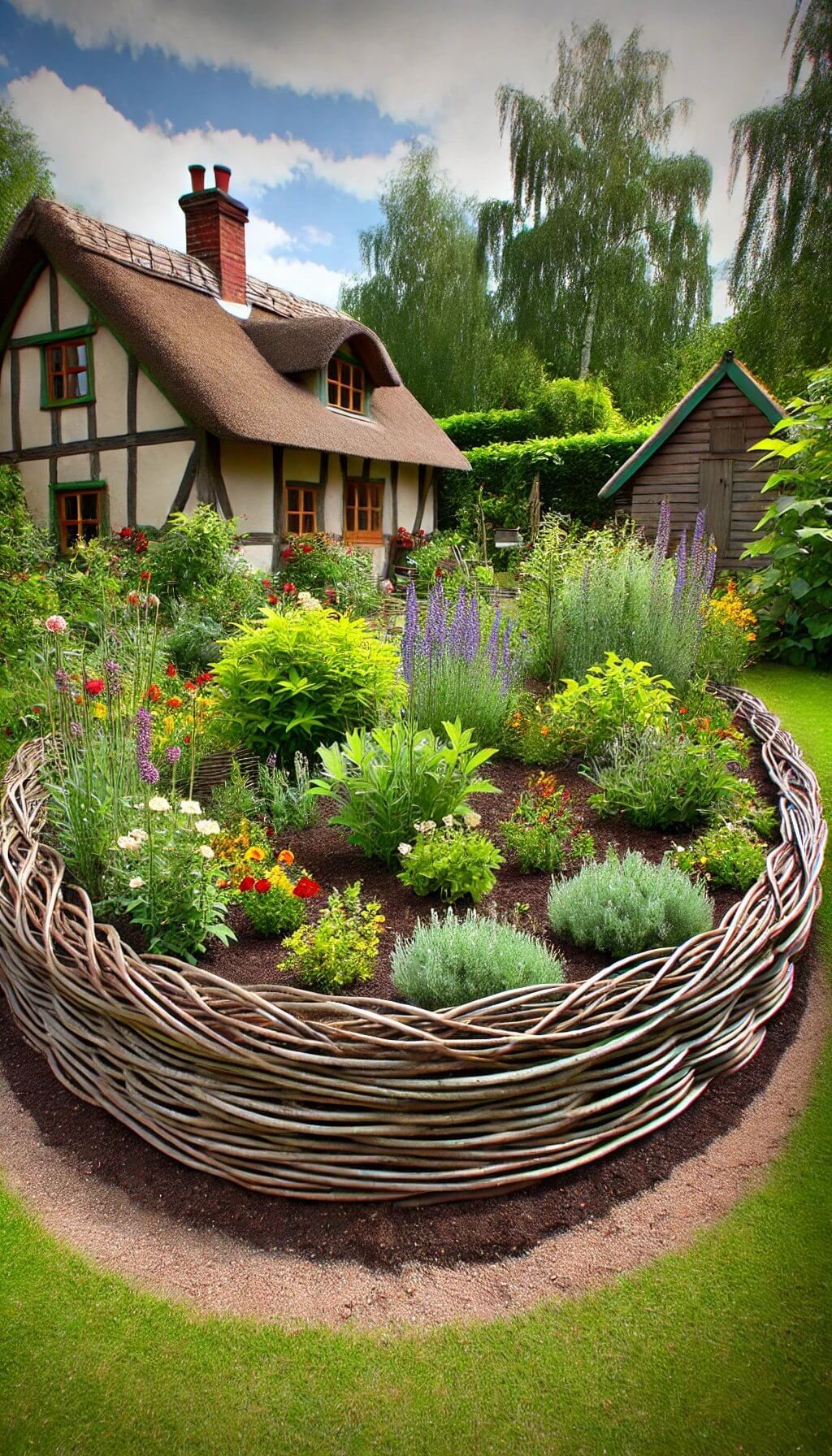
Transport yourself back in time by incorporating the timeless charm of wattle edging into your modern garden. This rustic technique has been delighting for centuries and remains a popular choice today. To create this unique border, you’ll need some pliable branches or twigs – willow is an excellent option. Simply weave them through stakes set firmly in the ground to achieve a whimsical, cottage-style design that’s both visually appealing and low-maintenance.
While wattle edging does require some occasional repair to keep it looking its best, this minor upkeep is a small price to pay for the many benefits it offers – including its impressive durability, cost-effectiveness, and ability to seamlessly blend with the natural beauty of your garden.
Rope Edging
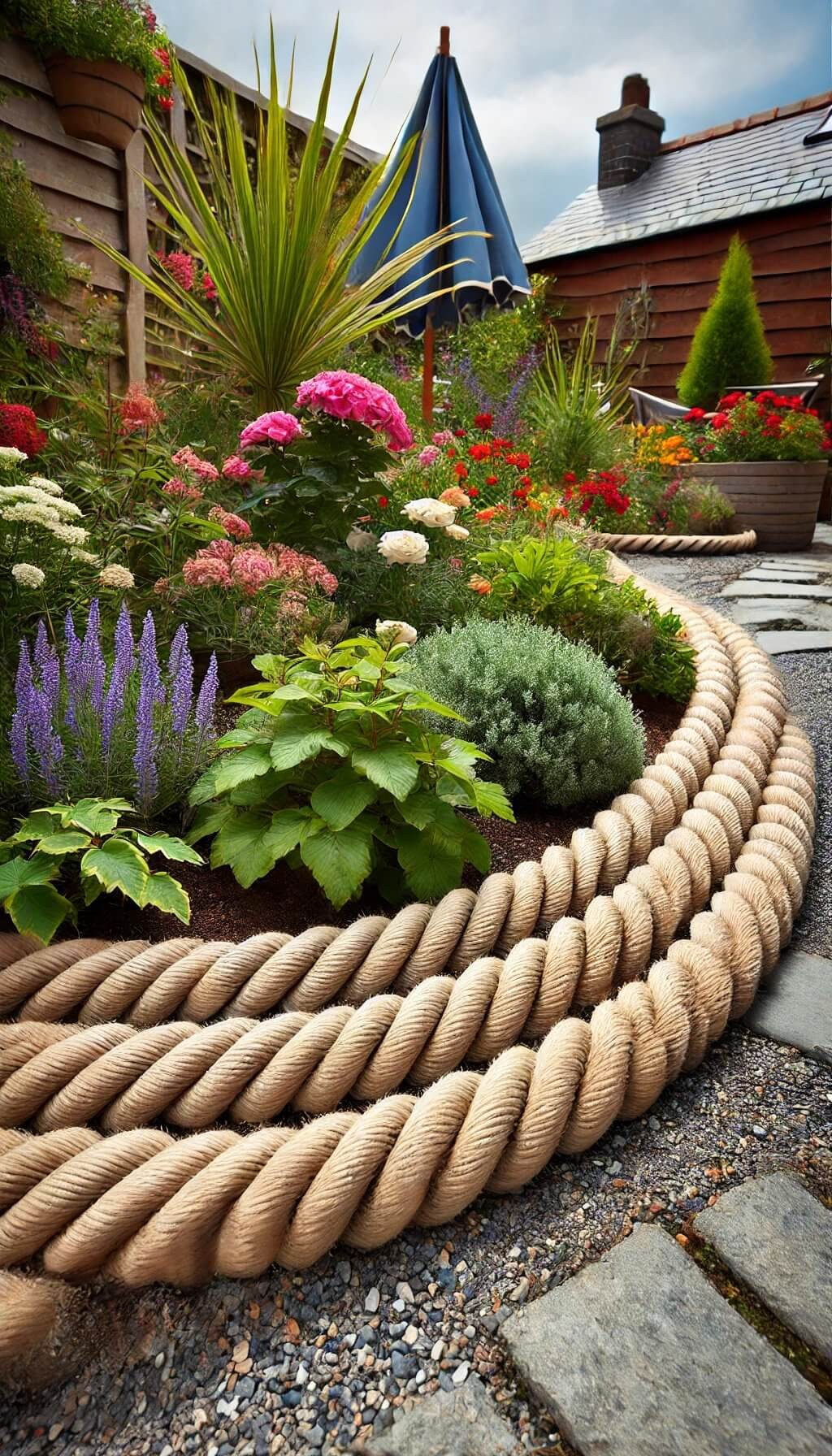
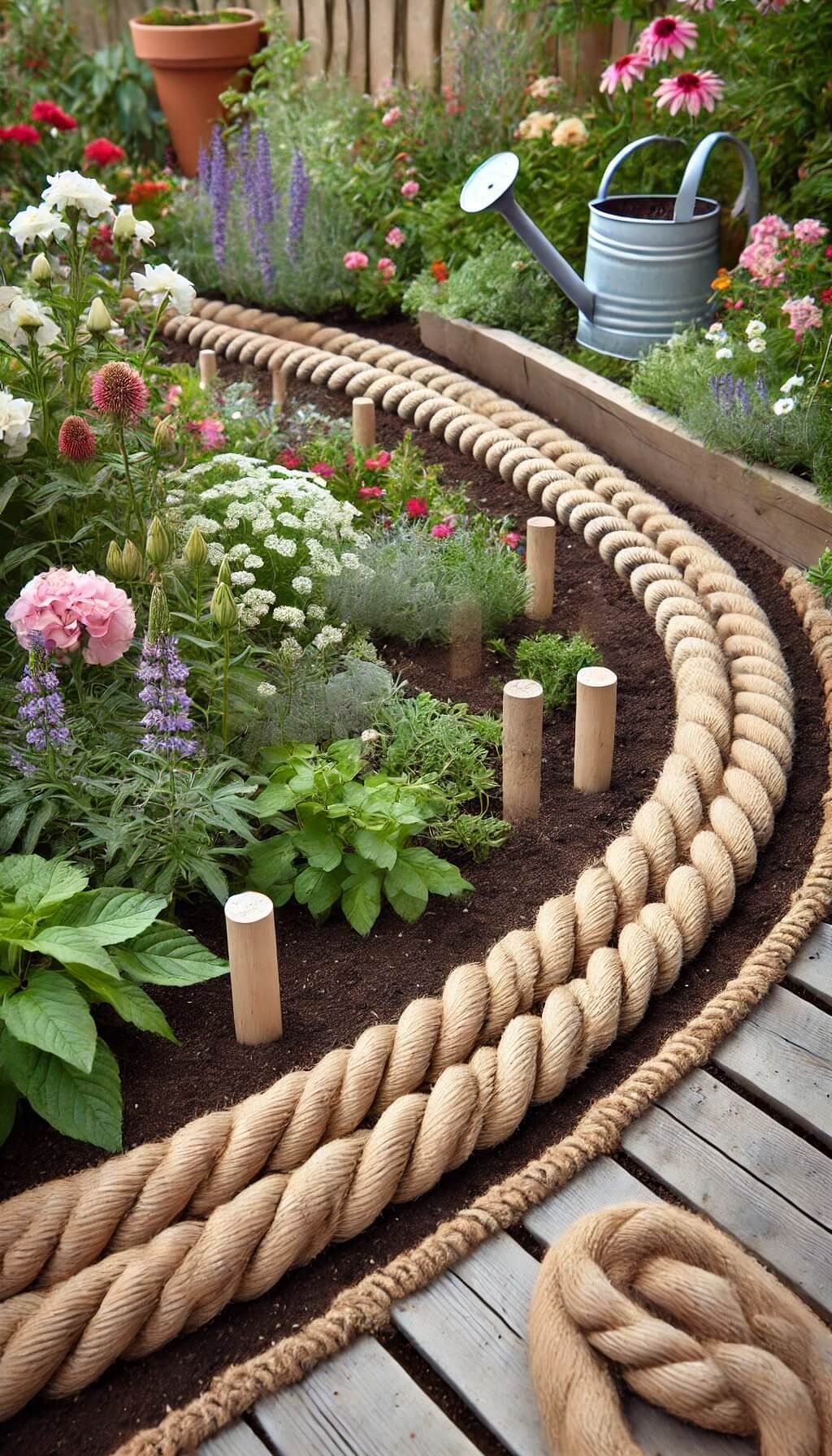
Rope edging brings a charming nautical touch to your garden, perfect for those who crave a seaside escape. To set up this stylish feature, measure your space, dig a shallow trench, and lay the rope, securing it with pegs. This design isn’t just aesthetically pleasing; it’s also surprisingly durable and easy to adjust. However, keep in mind that ropes may fray or lose their original color over time, so occasional replacement is necessary to maintain their appearance.
Despite this, rope edging remains a simple yet effective way to incorporate coastal vibes into your garden. For more inspiration on elevating outdoor spaces with natural elements, check out insights from gardening expert Jamie Durie.
Tile Edging
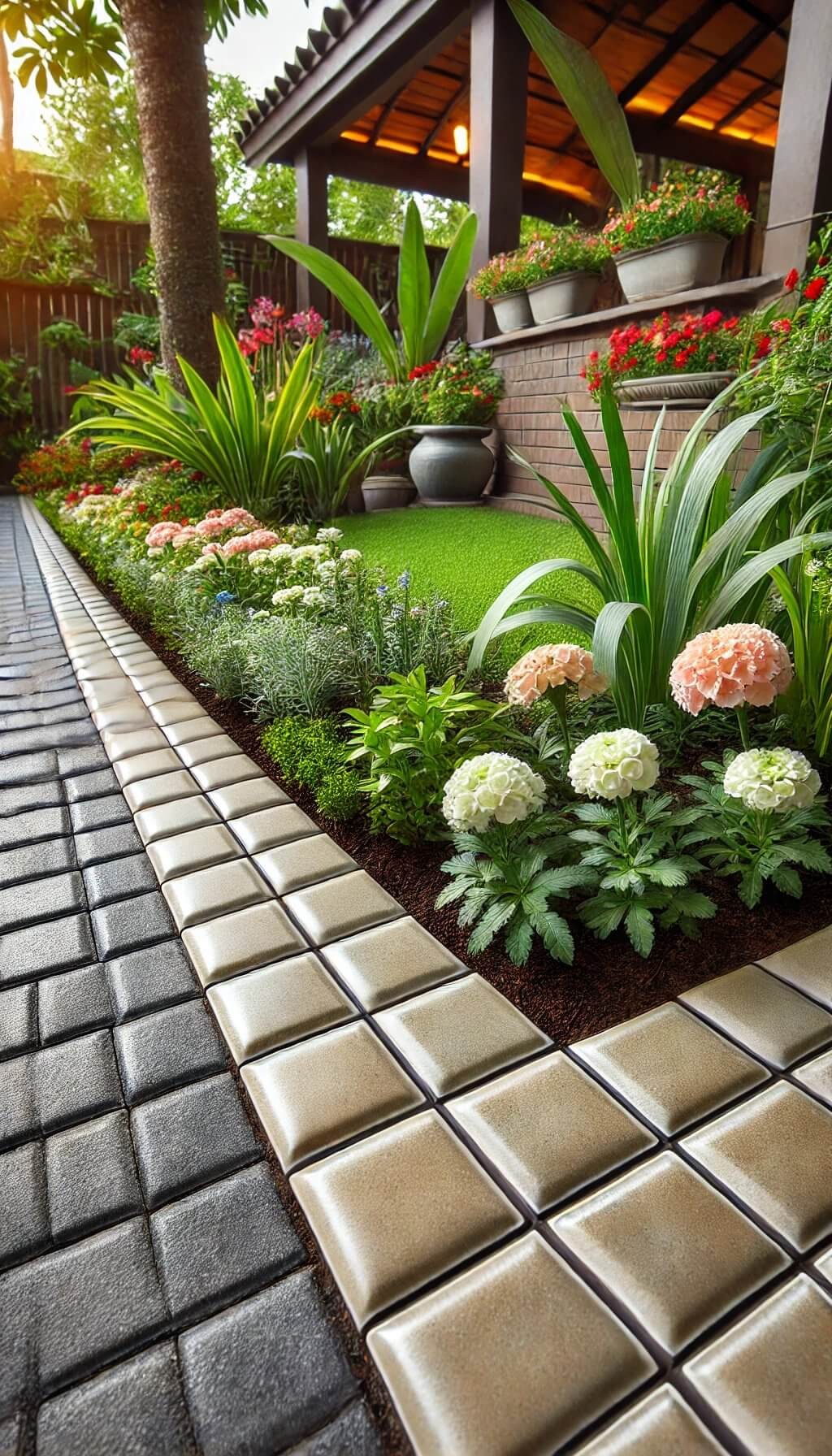
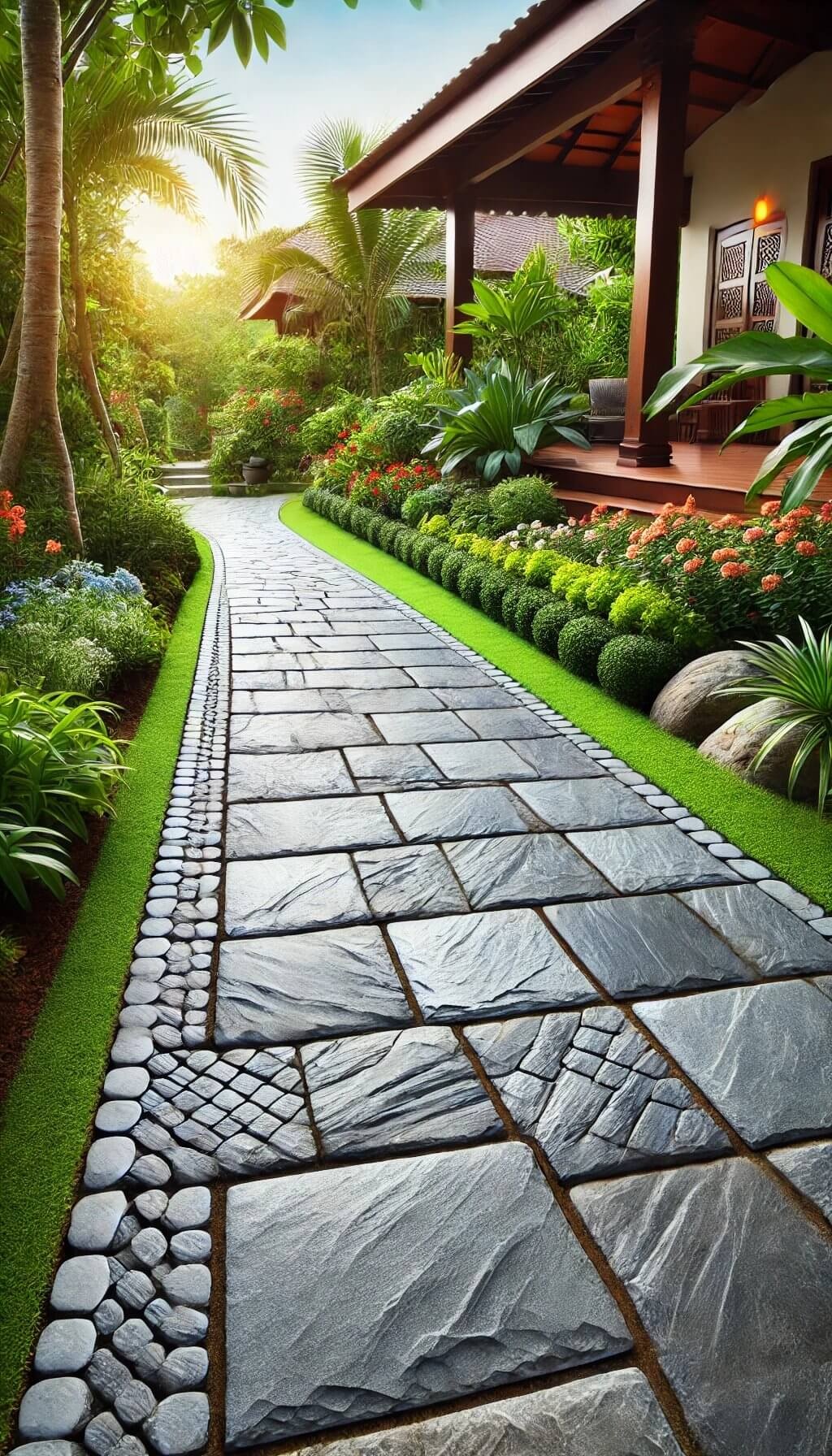
Elevate your garden’s curb appeal with tile edging, a sophisticated solution that employs ceramic or stone tiles to create visually striking borders. The installation process is relatively simple: start by laying a solid foundation, then position the tiles and secure them with mortar. While tile edging provides a polished appearance and a sturdy barrier, it does require attention to prevent cracks and chips from compromising its aesthetic appeal.
To maintain their beauty, regular cleaning is essential, as well as occasional sealing to preserve their newly minted look. This elegant feature can beautifully accentuate your garden paths or flower beds, imparting a refined edge that sets them apart.
Recycled Materials Edging
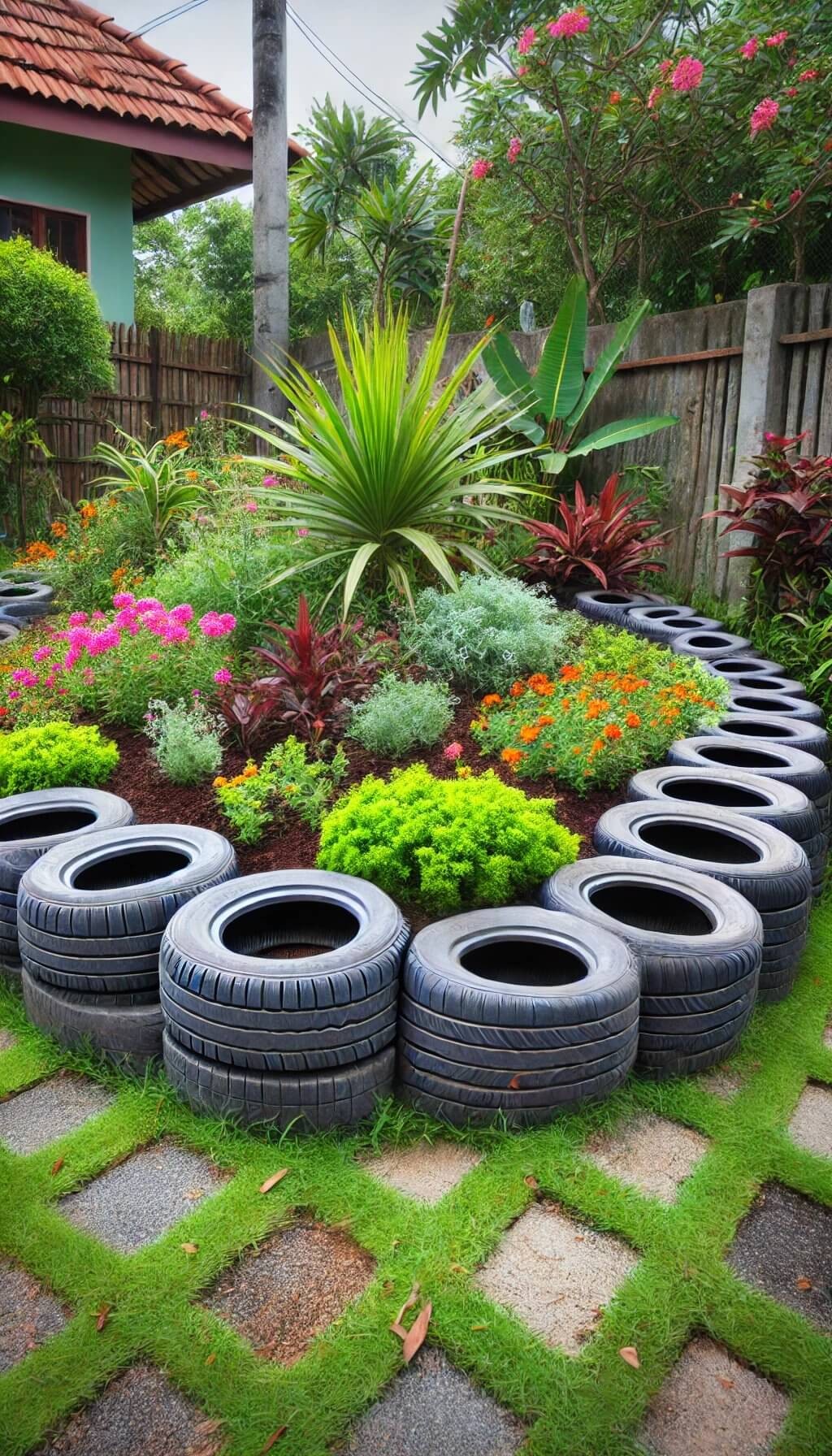
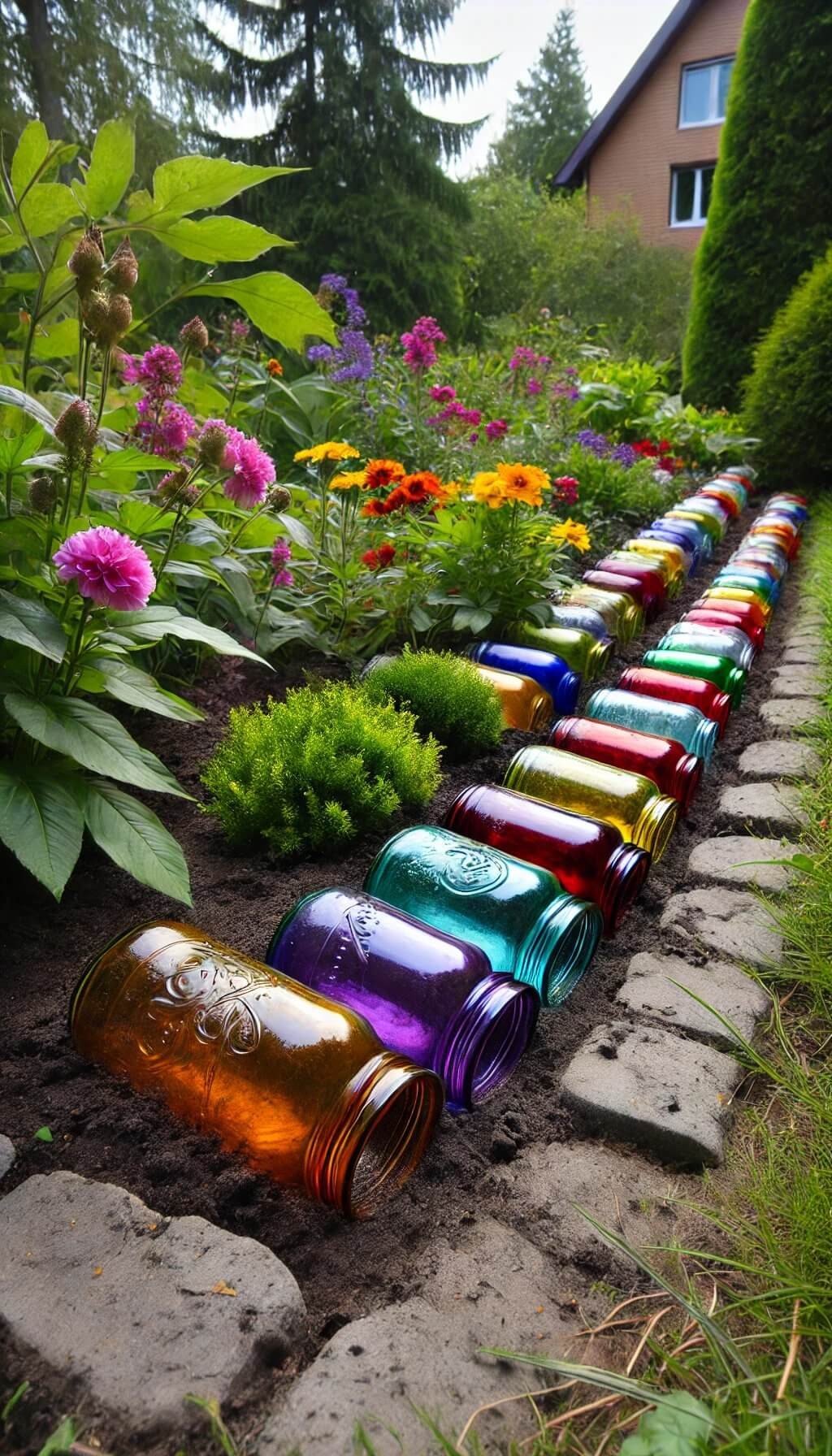
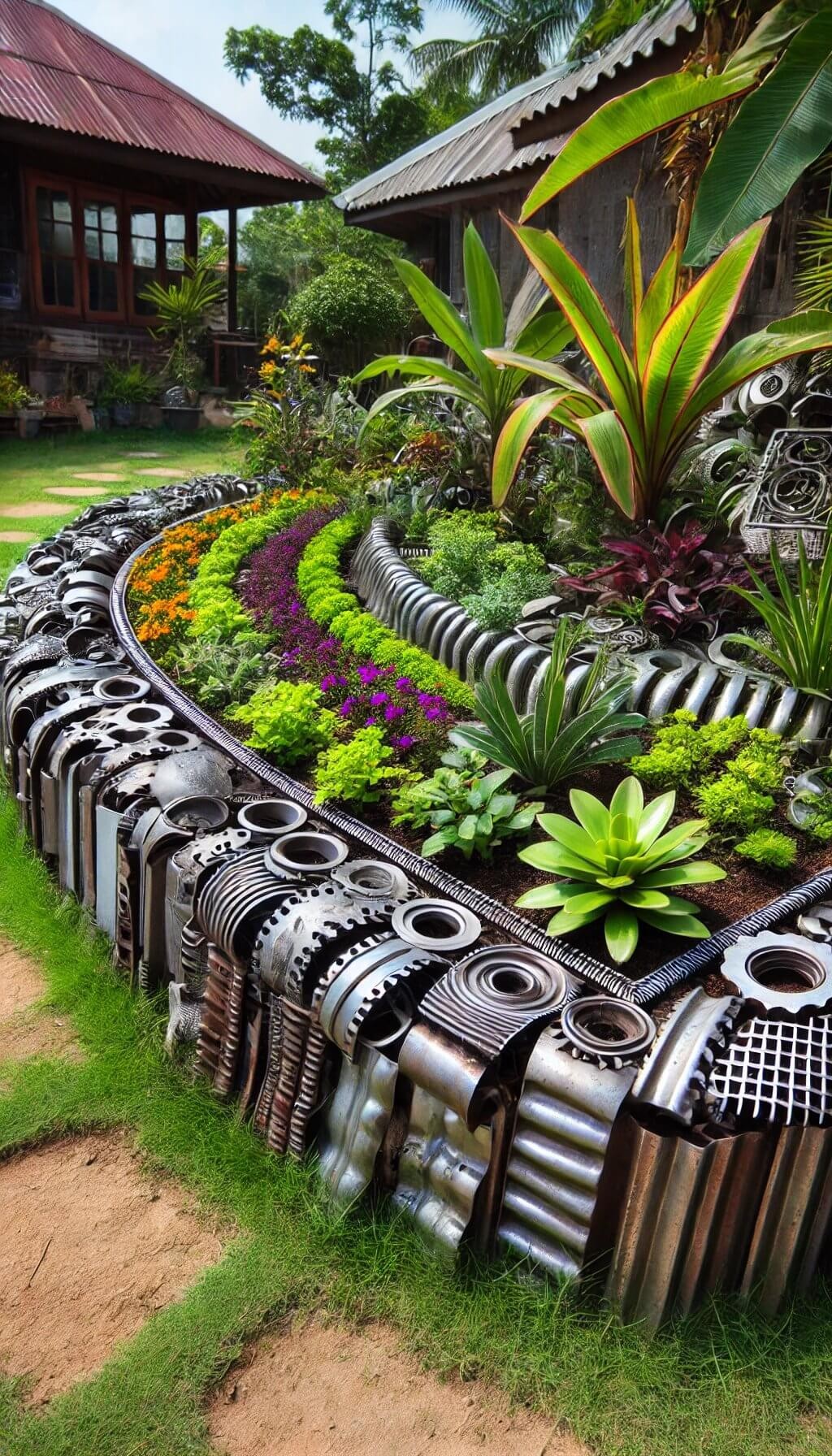
Transform your garden’s boundaries with an innovative approach that not only saves you money but also helps the environment. This creative solution utilizes recycled materials such as old tires, metal scraps, and glass jars to define different areas of your garden. Not only is it a cost-effective option, but it’s also a sustainable way to maintain a beautiful outdoor space. To get started, lay out your chosen materials along the edge of your garden and secure them firmly into the ground.
This type of edging not only adds visual interest but also encourages conversation-starting moments. Plus, its easy-to-replace design allows for simple refreshes whenever you want to update your garden’s look.
Conclusion

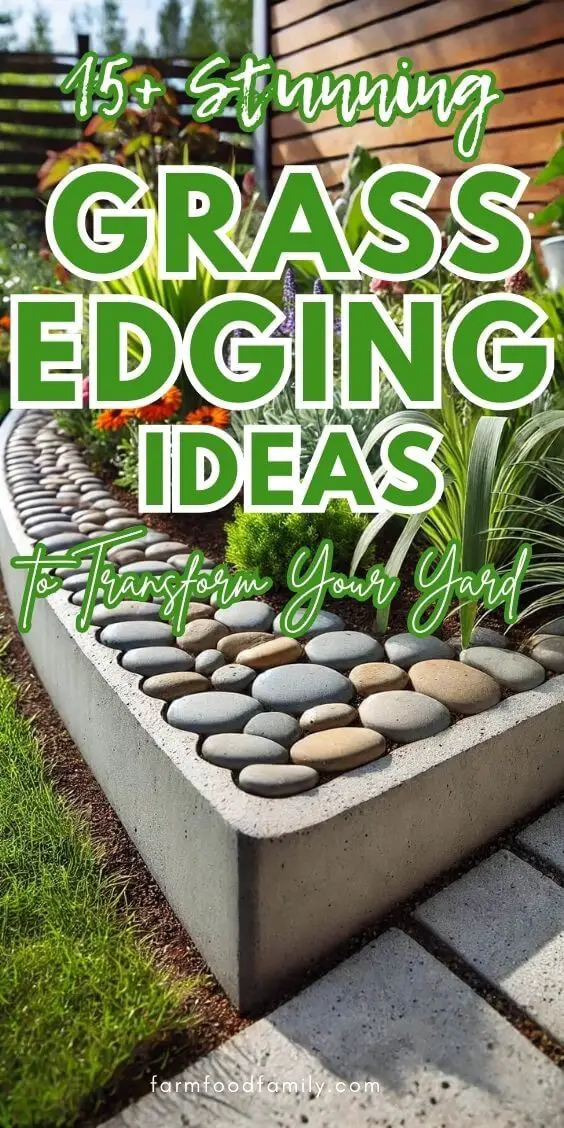
As we conclude this exploration of 15 grass edging ideas, it’s clear that each method offers not only a practical solution for maintaining clean garden lines but also contributes to the overall aesthetic appeal of your outdoor space. From the organic elegance of natural materials like bamboo and wood to the creative charm of repurposed elements, there’s an edging option to suit any garden style or gardener’s preference.
Whether you prioritize simplicity with rope or durability with concrete, each choice can harmoniously balance functional needs with personal flair. By diving into these ideas and selecting the one that resonates with you, you’ll be able to transform your garden into a visually stunning and well-defined oasis.
FAQs
What are the best materials for durable grass edging?
For a long-lasting and effective grass edging solution, consider opting for robust materials such as metal, concrete, or stone. These durable options can withstand the harsh effects of weather conditions, retain their shape and structure over time, and deliver a crisp, defined border for your garden beds.
How do I install rope edging in my garden effectively?
To get started with installing rope edging, begin by precisely marking out your desired edging line using stakes and string. Next, create a shallow trench along this marked path, carefully laying down your rope as you go. Secure it with ground stakes or pegs spaced evenly apart to ensure the rope remains in place. Finally, backfill the trench to provide additional stability and prevent any shifting of the rope over time.
Can recycled materials be used for effective garden edging?
Transform your garden’s edges with creative repurposing! Old tires, broken ceramics, and glass bottles can be cleverly used as effective edging solutions. Not only do these materials save you money, but they also infuse your garden borders with one-of-a-kind charm. Just make sure to secure them firmly to prevent any potential hazards for pets or children.
What are the advantages of using bamboo as garden edging?
With its numerous benefits, bamboo edging has become an increasingly popular choice among garden enthusiasts. Not only is it an eco-friendly option, boasting sustainability and renewability, but it’s also remarkably easy to install, allowing for a seamless integration with your outdoor surroundings. Its flexibility makes it particularly well-suited for curved or irregularly shaped garden beds, while its natural appearance ensures a harmonious blend with the environment.
For those committed to minimizing their environmental footprint, bamboo edging is an attractive option that offers a winning combination of practicality and sustainability.
How often should I maintain my tile edging to keep it in good condition?
In order to ensure the longevity and aesthetic appeal of tile-edged surfaces, it is crucial to conduct regular inspections for any signs of looseness or cracking in the tiles. Once identified, these issues should be addressed promptly through repair methods tailored to the specific problem.
Additionally, maintaining a consistent cleaning schedule and resealing the tiles every few years can significantly contribute to their resilience against weathering and soil pressure, ultimately preserving their original appearance.


